The 10 Most Successful ECommerce Apps In Vietnamese Market







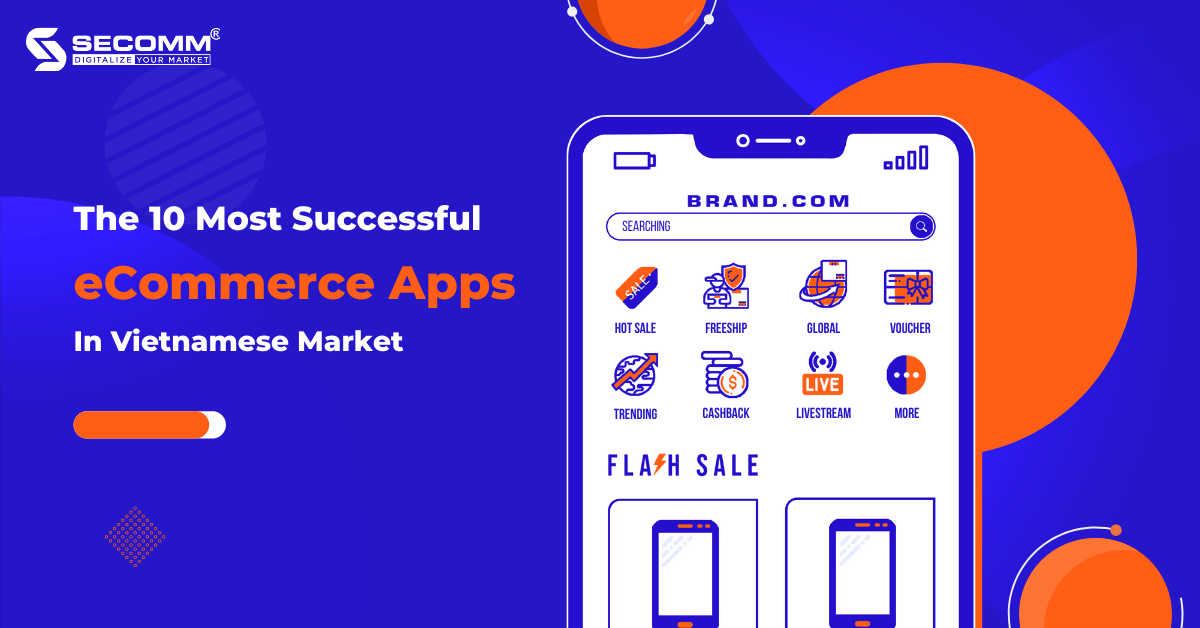
The significant increase in the number of smartphone users has contributed to the rise of Mobile Commerce trends worldwide, including in Vietnam. It’s time for retailers to focus on supporting their customers in searching and shopping through mobile devices, in addition to eCommerce websites.
Many businesses across various sectors, from shopping, healthcare to food, have performed very well in this strategy by becoming pioneers in embracing Mobile Commerce trends in Vietnam.
1. SHEIN
The SHEIN app is known as one of the most successful eCommerce apps in the world today, and now it has become the most downloaded mobile app in the shopping category in 2022 with 229 million downloads and installs from both Google Play and the App Store.
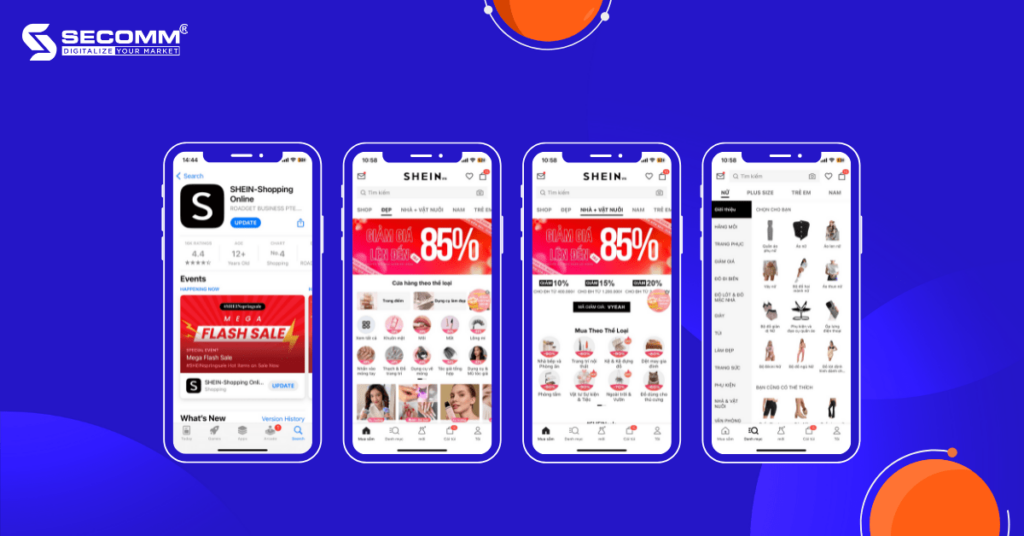
In the Vietnamese market, SHEIN is also highly rated by users for their shopping experience on the app. In the latest update, SHEIN added a discount program for some fashion items of up to 70%, as well as fixing some bugs and improving performance to provide users with a better experience.
- Downloads: +100M
- Reviews: 4.5 ★ (Google Play), 4.4 ★ (App Store)
- Rankings: #4 in the Shopping category
Download the SHEIN app: Google Play | App Store
2. Uniqlo VN
When entering the Vietnamese market in 2019, Uniqlo quickly captured and responded to the local consumers’ fashion shopping trends, which made the brand very popular. The Uniqlo VN app stands out with many necessary functions for a consistent shopping experience between mobile devices and other channels. In order to attract more users, Uniqlo will offer a 150,000 VND discount voucher for anyone who downloads the app and signs up as a new member.

Although the Uniqlo VN app is highly rated for user experience, the brand still keeps updating and improving its features. In the latest update, Uniqlo has improved the quality of product image display and adjusted the accurate display of the number of products available in-store.
- Downloads: +500K
- Reviews: 4.7 ★ (Google Play), 4.9 ★ (App Store)
- Rankings: #10 in the Shopping category
Download the Uniqlo VN app: Google Play | App Store
3. Hasaki
Hasaki not only has nationwide brick-and-mortar stores and an eCommerce website but also develops a mobile app to offer its customers enriched shopping experiences and attractive incentives.
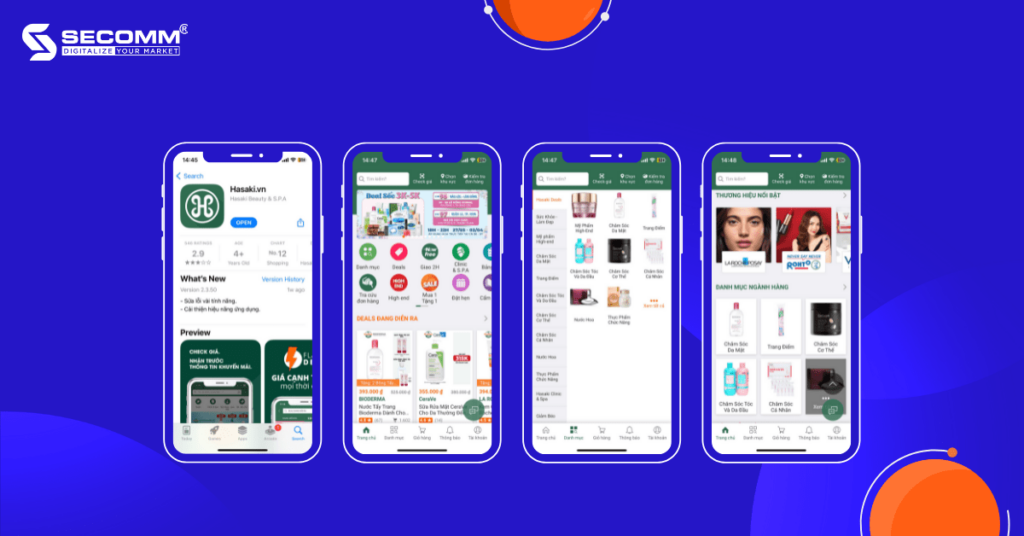
By using the Hasaki app, customers can conveniently search and purchase products anytime, anywhere, track their order status, and make appointments for spa and clinic services at the store. One thing that makes Hasaki special is the free delivery within 2 hours for all customers, whether shopping at the store, eCommerce website, or mobile app. Despite getting much critical feedback for usage quality, Hasaki is still very receptive, fixing bugs and optimizing performance in the recent updates.
- Downloads: +100K
- Reviews: 3.3 ★ (Google Play), 4.3 ★ (App Store)
- Rankings: #12 in the Shopping category
Download the Hasaki app: Google Play | App Store
4. Go! & Big C
After rebranding, the Big C supermarket chain has been renamed Go!. As a result, the mobile app of this business is now called Go! & Big C. Customers who shop on the app will enjoy many benefits, including:
- Free shipping for orders over 300,000 VND purchased on the mobile app;
- Daily promotions will be automatically updated;
- Create shopping lists directly on the app;
- Participate in weekly games to win coupons or vouchers;
- Track & accumulate points directly in the app.
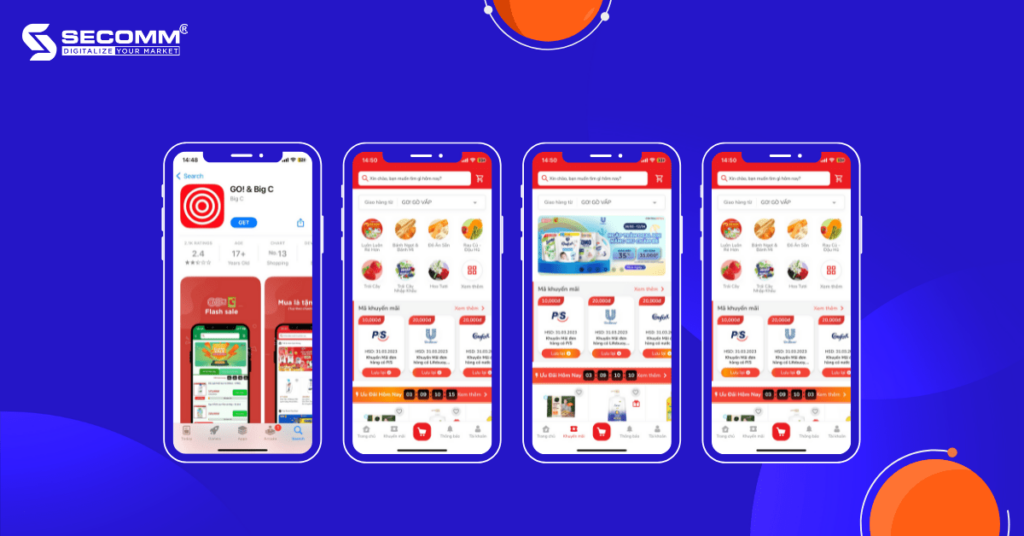
The Go! & Big C app is regularly updated to improve the online shopping experience for customers. In the most recent update, the developer has improved the payment function, fixed bugs, optimized performance, and image display capabilities.
- Downloads: +1M
- Reviews: 2.8 ★ (Google Play), 2.4★ (App Store)
- Rankings: #13 in the Shopping category
Download the Go! & Big C: Google Play | App Store
5. Con Cung
Con Cung is one of the first childcare brands to develop its mobile app to provide customers with a consistent shopping experience across different channels, including physical stores, mobile apps, and eCommerce websites.

The Con Cung app has received very positive reviews from users on both Google Play and App Store for user experience, product quality, and promotional programs. However, the brand still maintains the practice of testing and improving certain features such as displaying detailed driver’s information when customers place orders for the 1-hour delivery service and fixing bugs related to payment via eWallet.
- Downloads: +1M
- Reviews: 4.7 ★ (Google Play), 4.8 ★ (App Store)
- Rankings: #24 in the Shopping category
Download the Con Cung app: Google Play | App Store
6. Dien May Xanh
Dien May Xanh is a big player in the Vietnamese home appliance industry that has successfully captured the market trend and quickly developed a mobile app to reach the huge smartphone user base in Vietnam – approximately 69 million users.
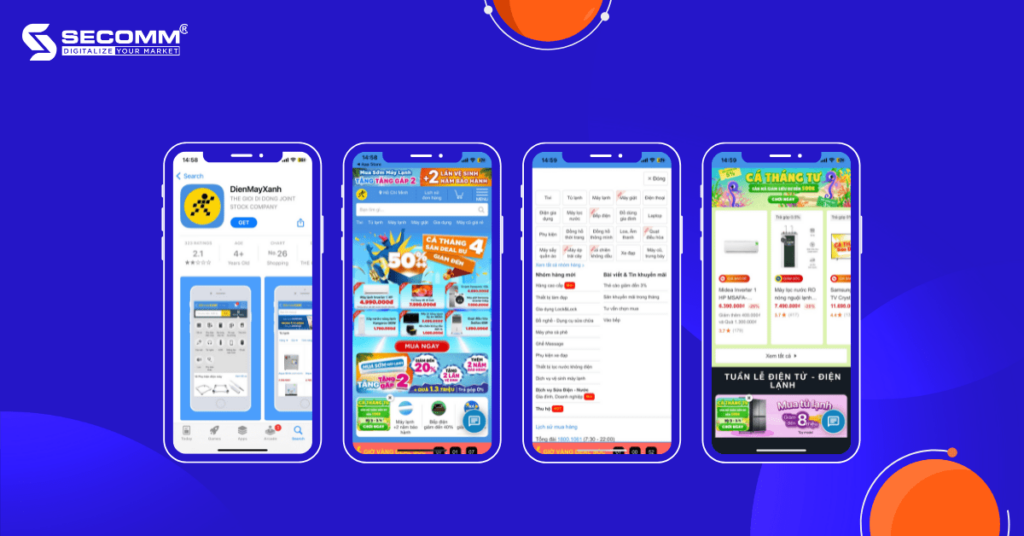
In addition to massive promotional programs on special occasions, Dien May Xanh also provides customers with discounted payment programs using various methods such as Buy Now Pay Later, QR Code, etc. All of these are carried out quickly and easily both on the website and the mobile app.
- Download: +1M
- Reviews: 4.0 ★ (Google Play), 2.3 ★ (App Store)
- Rankings: #31 in the Shopping category
Download the app: Google Play | App Store
7. LixiBox
The Vietnamese mobile commerce market has witnessed the entrance of another famous cosmetics retail brand, LixiBox. Similar to Hasaki, LixiBox also continuously updates its app to enhance the shopping experience of customers.

Moreover, the brand offers many special incentives to attract users such as a 20% discount for the first order placed on the app, a referral program where customers can receive 500,000 VND, a magazine section where users can update the latest beauty trends right on the app, and a LixiBox Feed section where customers can share their experiences on products and services.
- Downloads: +100K
- Reviews: 4.4 ★ (Google Play), 4.4 ★ (App Store)
- Ranking: #113 in the Shopping category
Download the LixiBox app: Google Play | App Store
8. Long Chau
When the Long Chau mobile app was launched during the Covid epidemic, it quickly received support from customers everywhere because they could buy medicine and healthcare products online and have them delivered to their door, while also earning reward points for their next purchase. In addition, the app has a call and message feature that allows users to contact pharmacists online for free in-depth advice and support. Furthermore, Long Chau is the first pharmacy to pioneer the Buy Now Pay Later service with 0% interest, helping patients and customers find a new convenient way to make purchases.
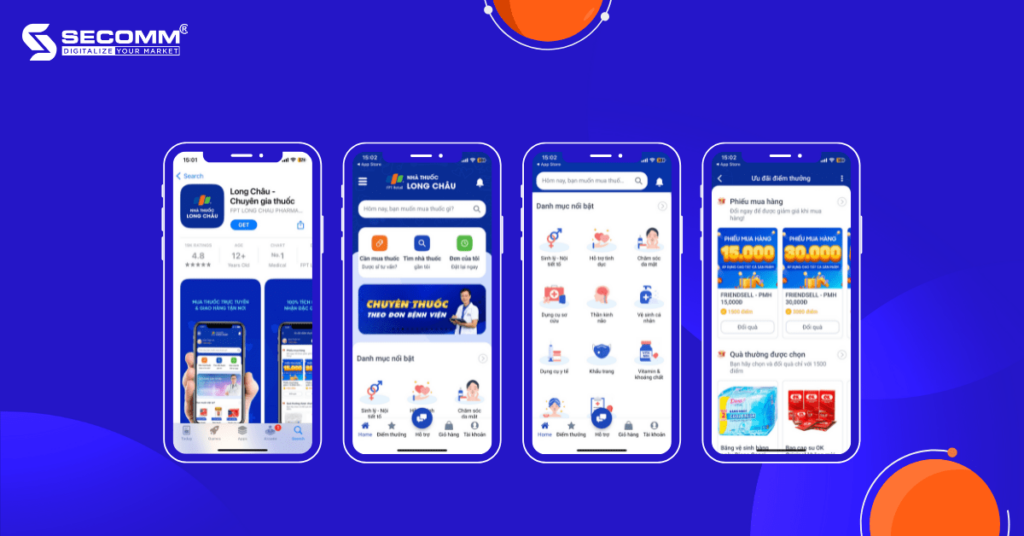
User experience is a particularly important factor that Long Chau focuses on, and the app regularly releases updates. These updates include optimizing the login function, improving the payment function, integrating payment via eWallet, synchronizing order status on the website and app, suggesting reordering, and more.
- Downloads: +1M
- Reviews: 4.5 ★ (Google Play), 4.8 ★ (App Store)
- Ranking: #1 in the Medical category
Download the Long Chau app: Google Play | App Store
9. Pharmacity
Pharmacity is a mobile app developed by the convenient pharmacy chain – Pharmacity in 2018. Similar to Long Chau, the Pharmacity app was created to provide customers and patients with a convenient and fast shopping experience, along with online consultation services from a team of highly specialized pharmacists.
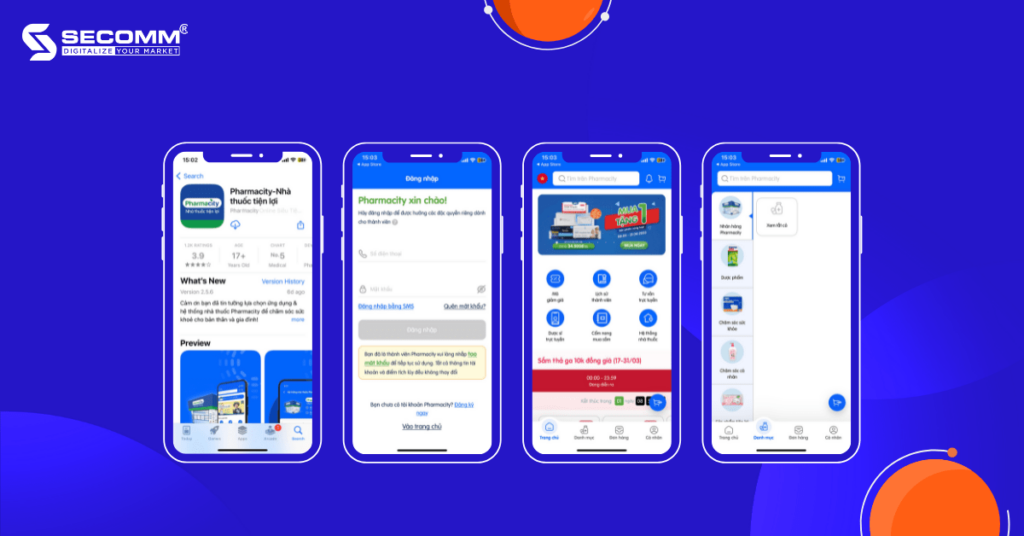
In its latest update, Pharmacity has improved and added some features, including a gift program for first-time users who download the app and sign up as members.
- Downloads: +100K
- Reviews: 2.2 ★ (Google Play), 3.9 ★ (App Store)
- Ranking: #4 in the Medical category
Download the Pharmacity app: Google Play | App Store
10. The Coffee House
In 2021, the famous beverage brand The Coffee House officially launched its mobile app with the same name, aimed at providing customers with the experience of ordering drinks for delivery or picking up at the store, along with many reward point programs for attractive incentives.
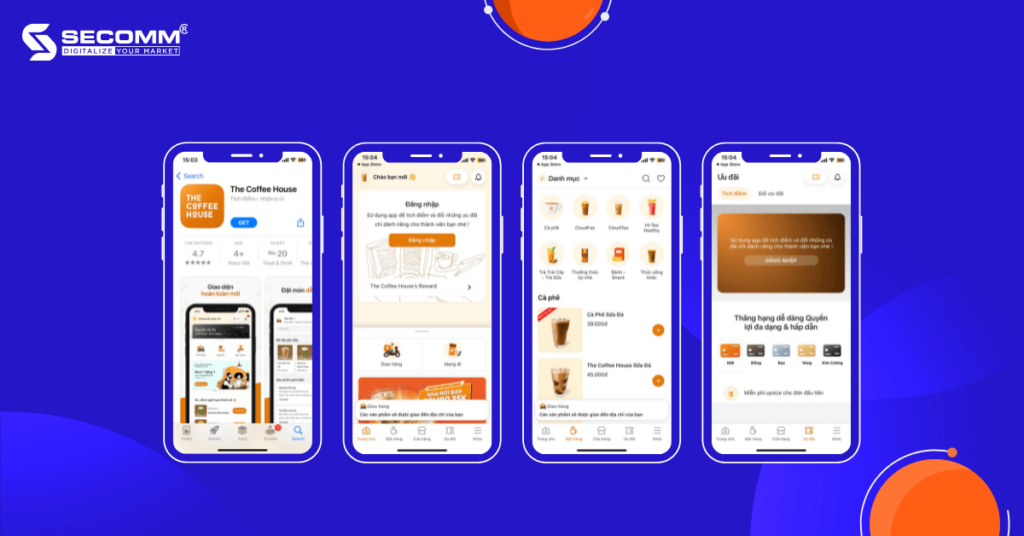
After two years of development, the new version of The Coffee House app features a completely new interface and many special features designed to enhance the customer experience both on the app and at physical stores.
- Downloads: +500K
- Reviews: 3.7 ★ (Google Play), 4.7 ★ (App Store)
- Ranking: #20 in the Cuisine category
Download the app: Google Play | App Store
Mobile eCommerce apps are one of the rising trends in mobile commerce. As a result, developing mobile shopping apps is the first smart move to achieve sustainable growth in the booming era of mobile commerce.
Contact SECOMM now for advice on how to implement and develop the best strategies to dominate the Mobile Commerce market.






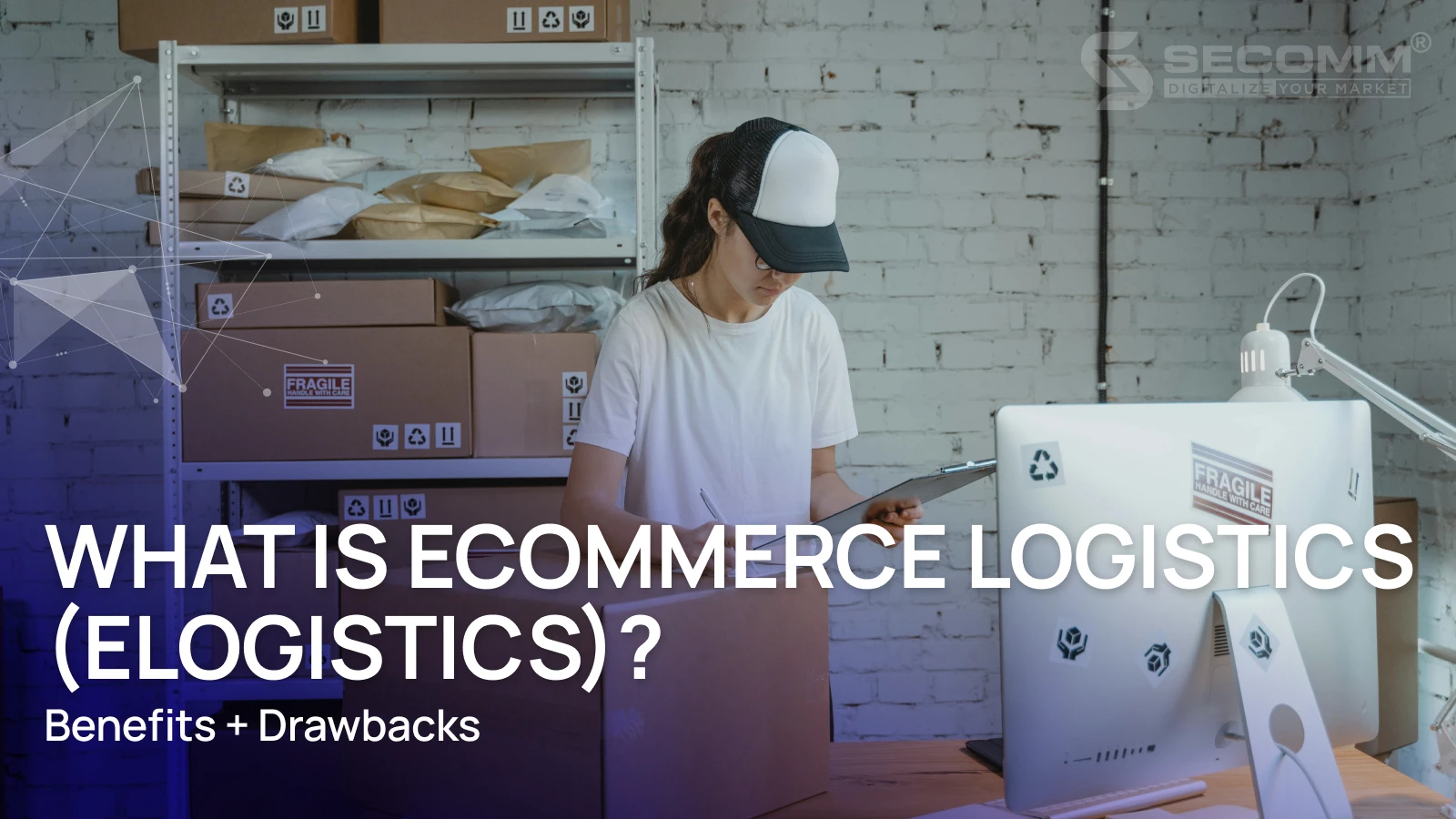
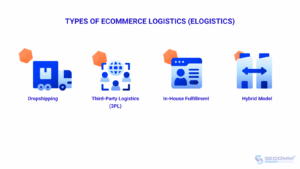
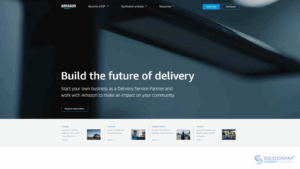
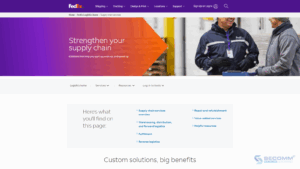
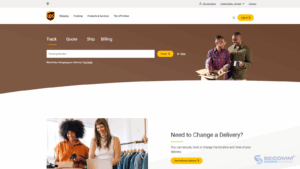

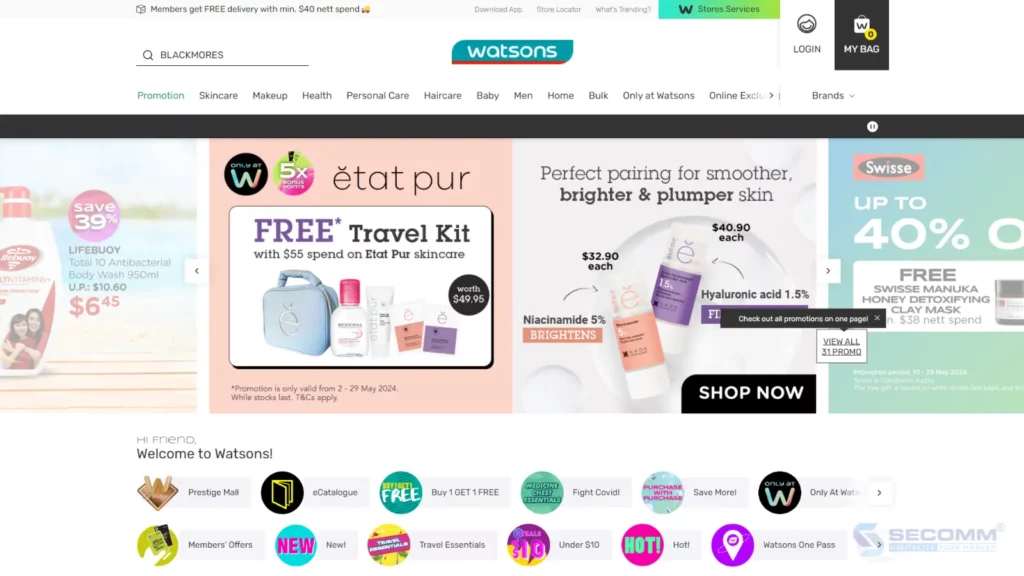
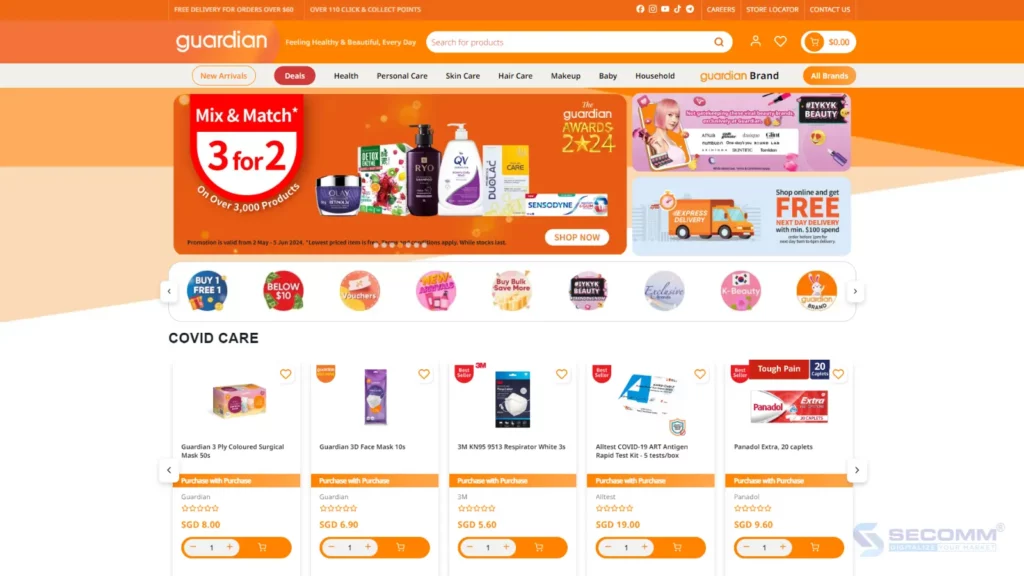







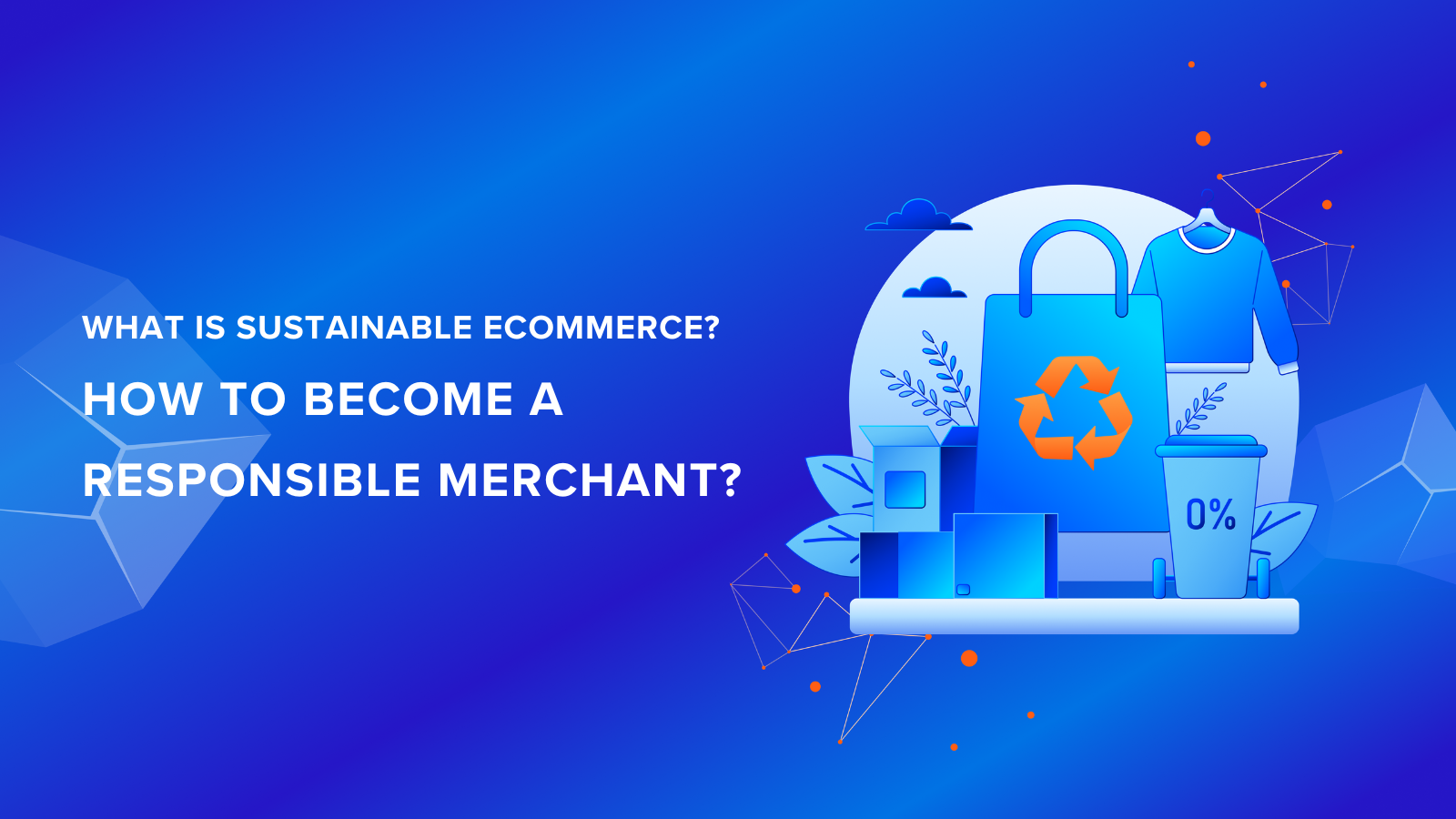

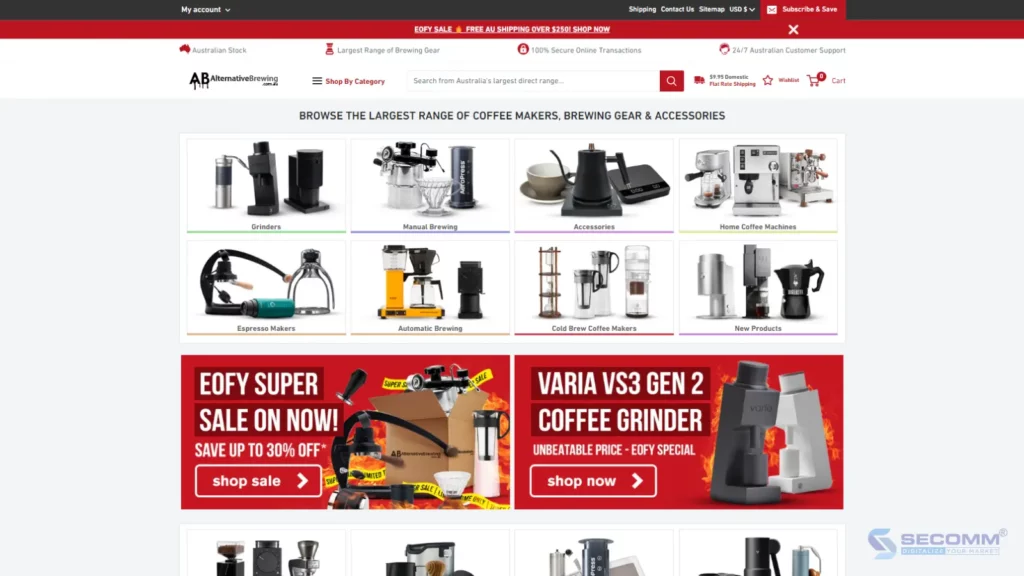




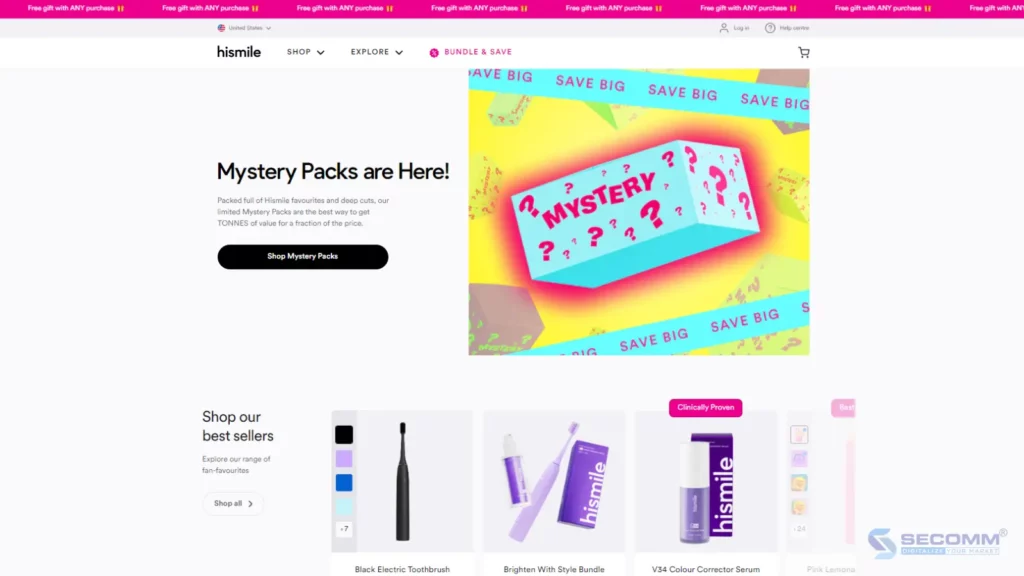
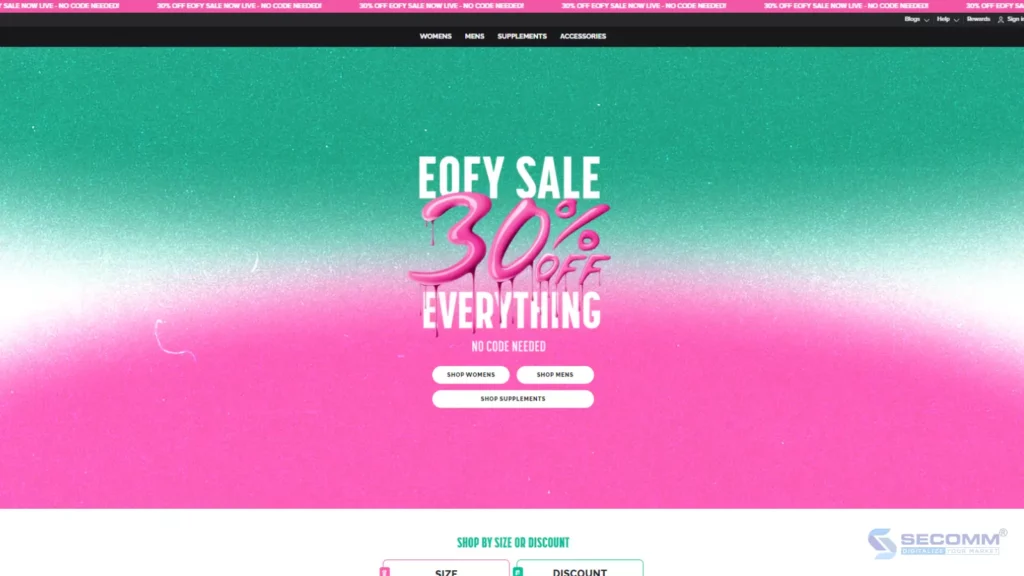



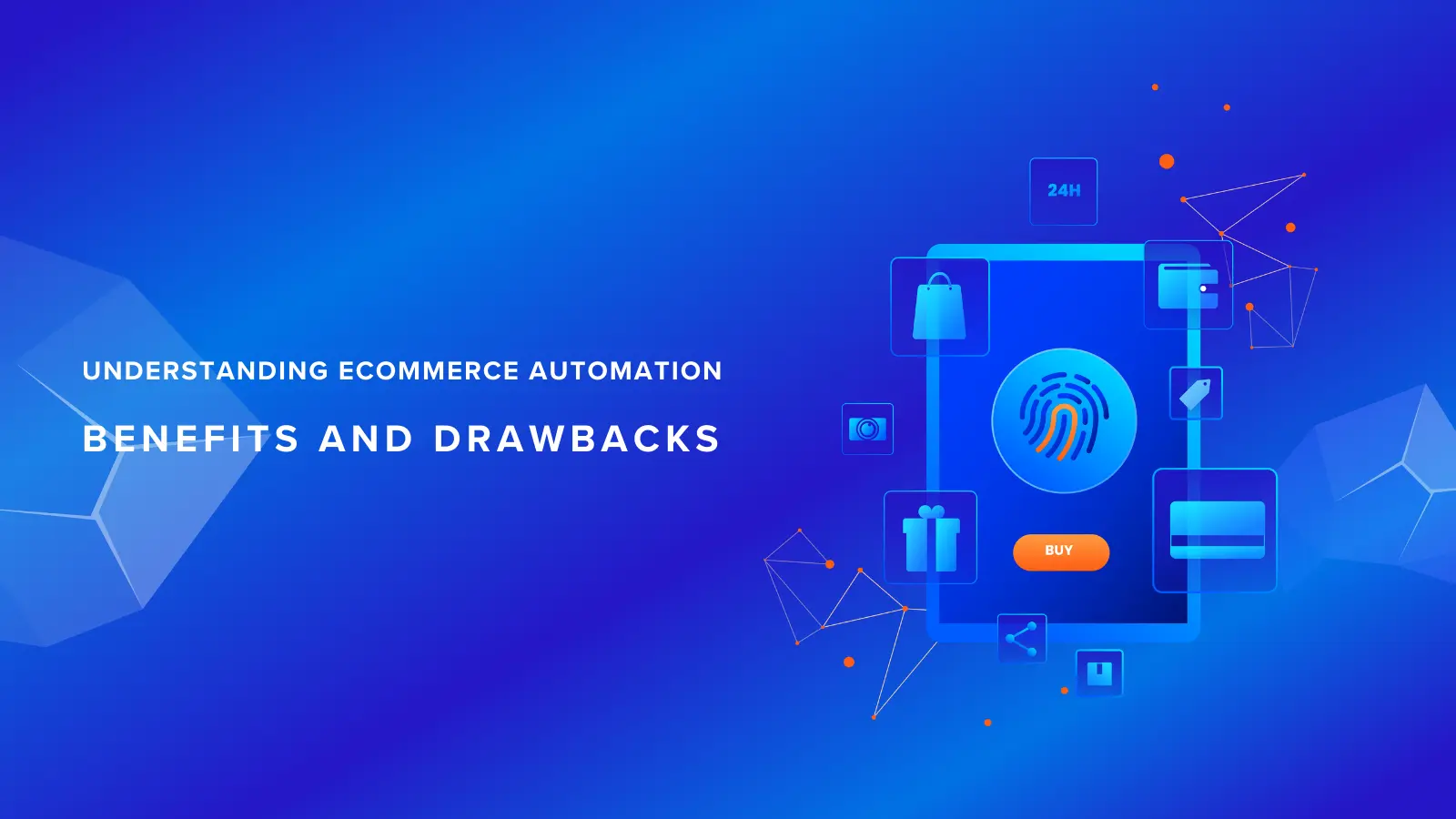
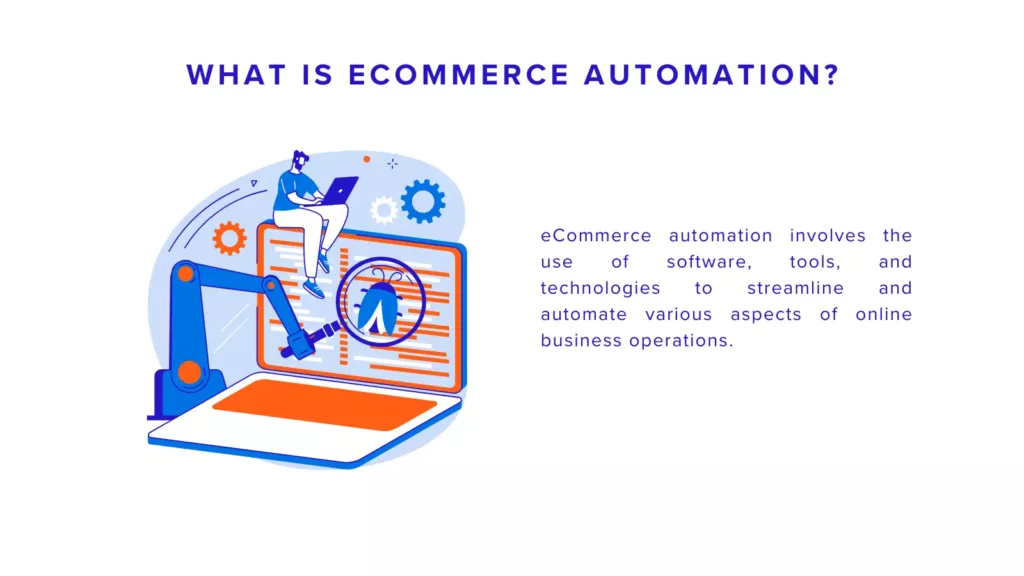
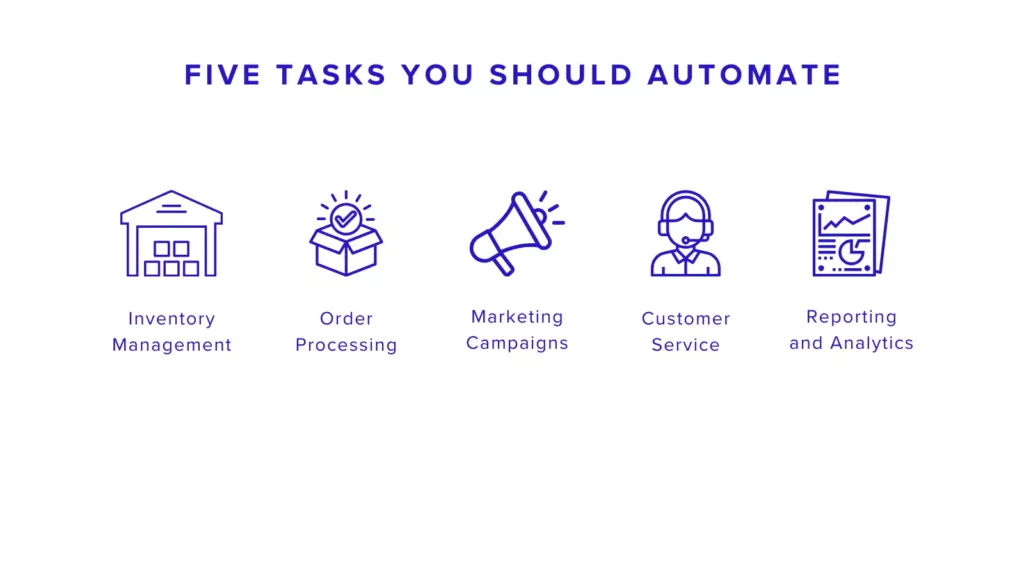
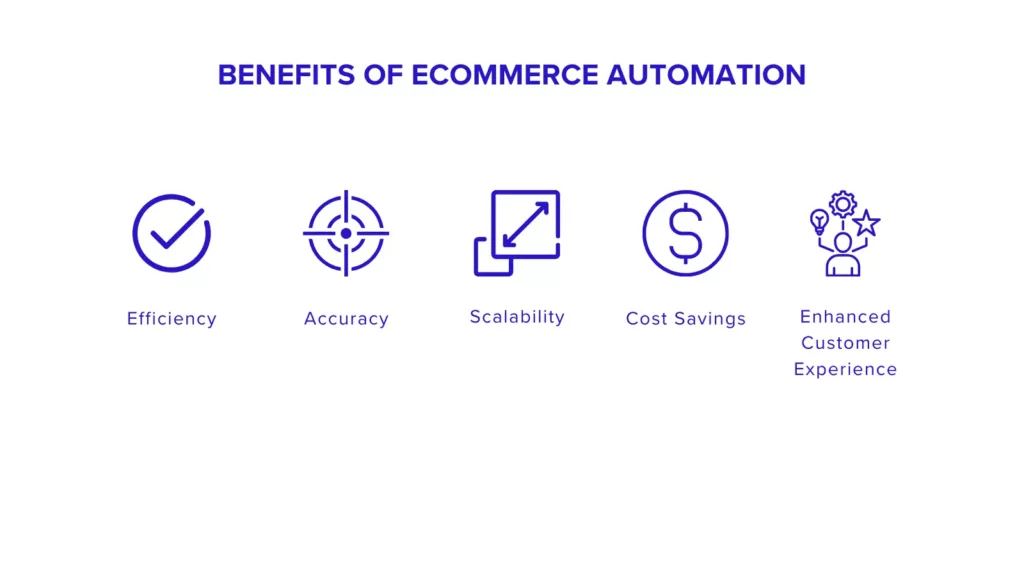
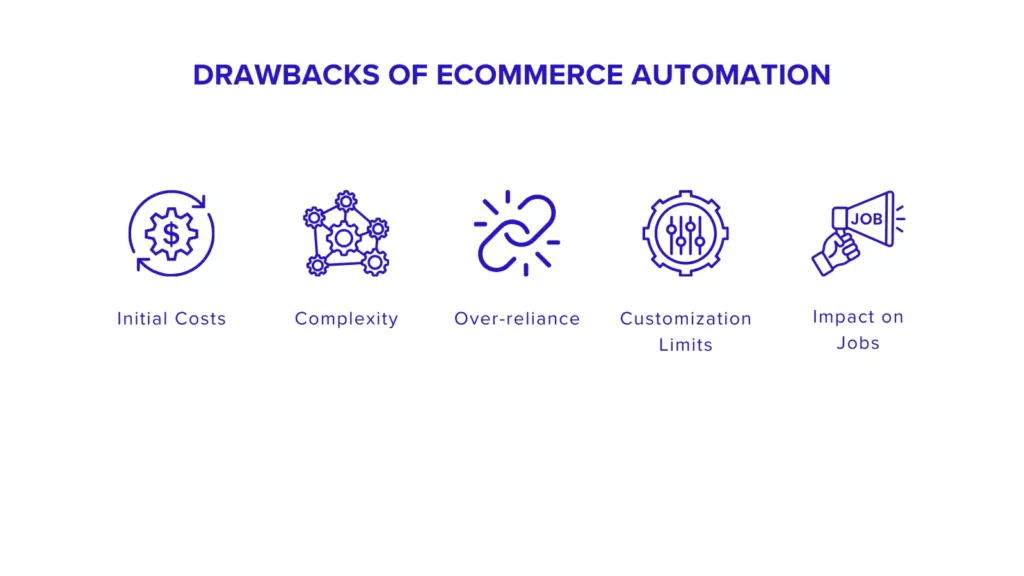
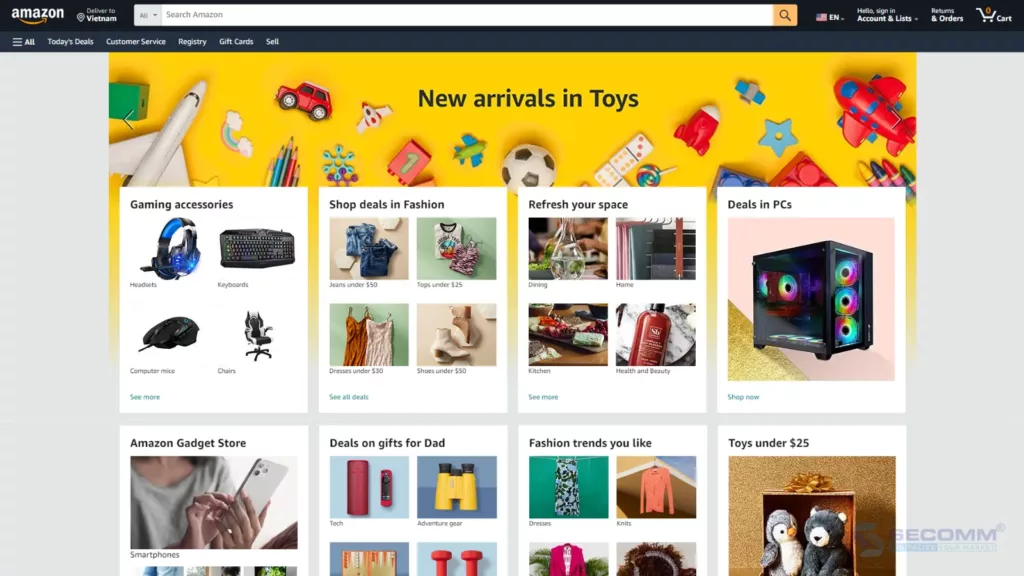
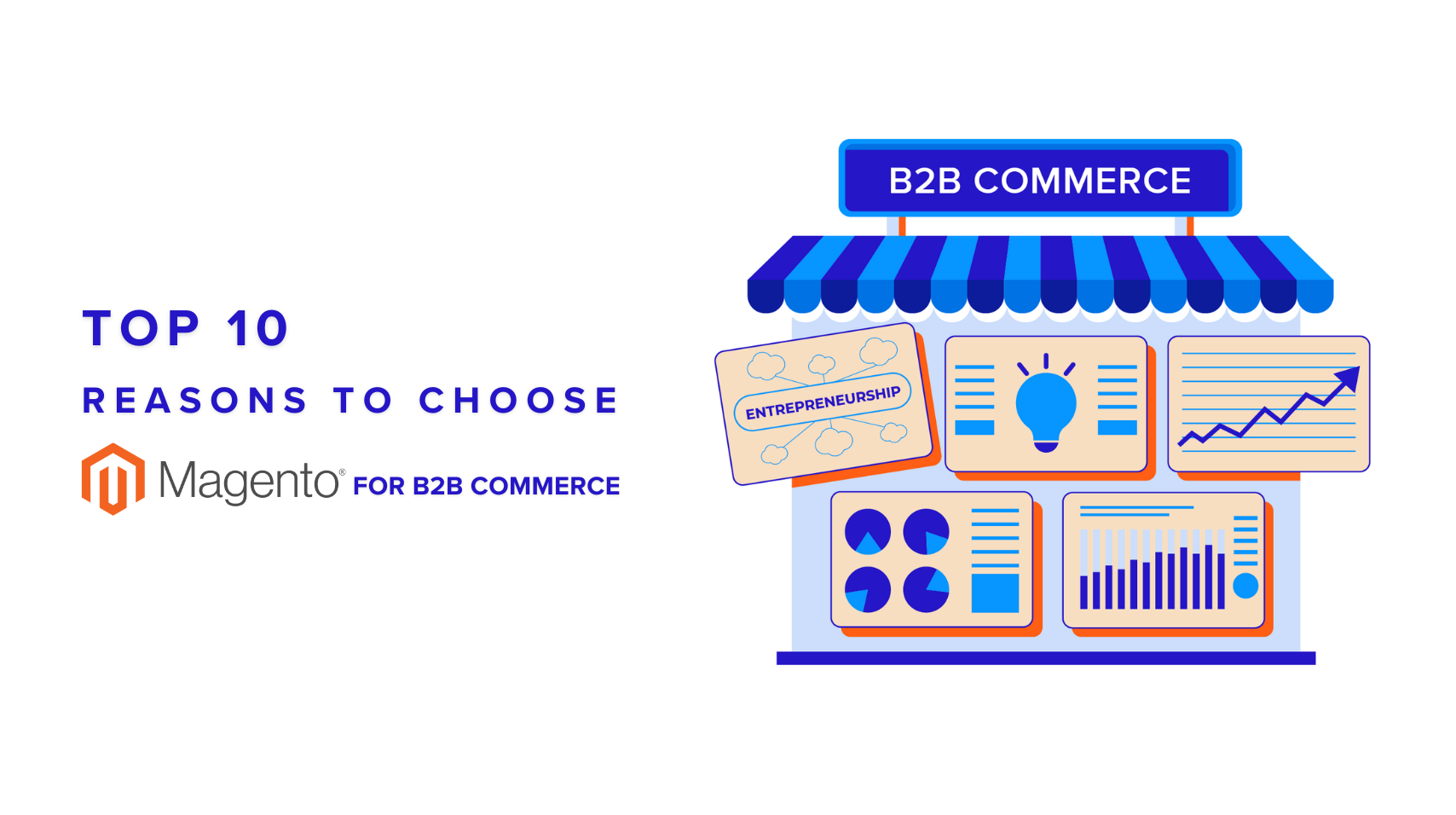
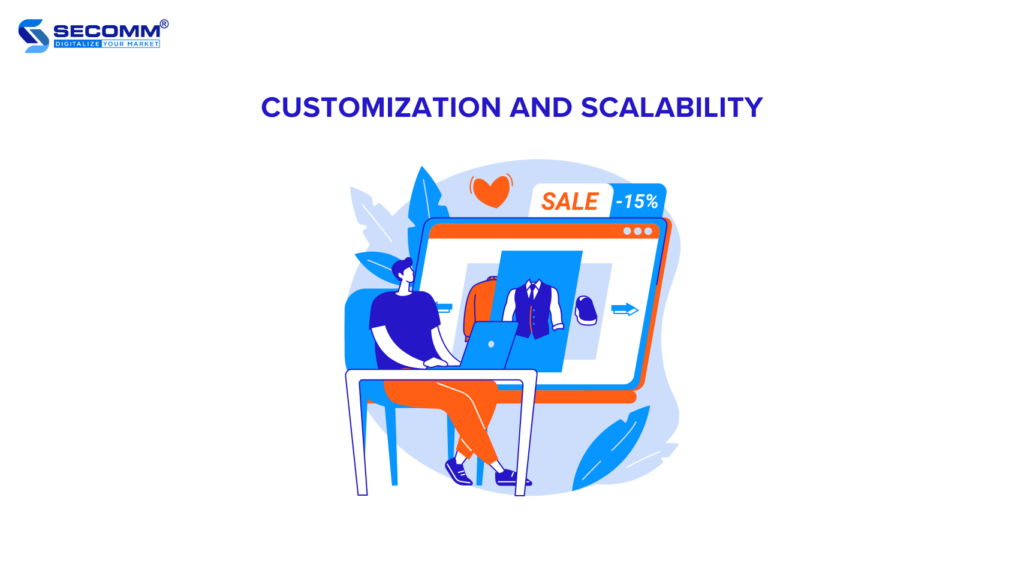
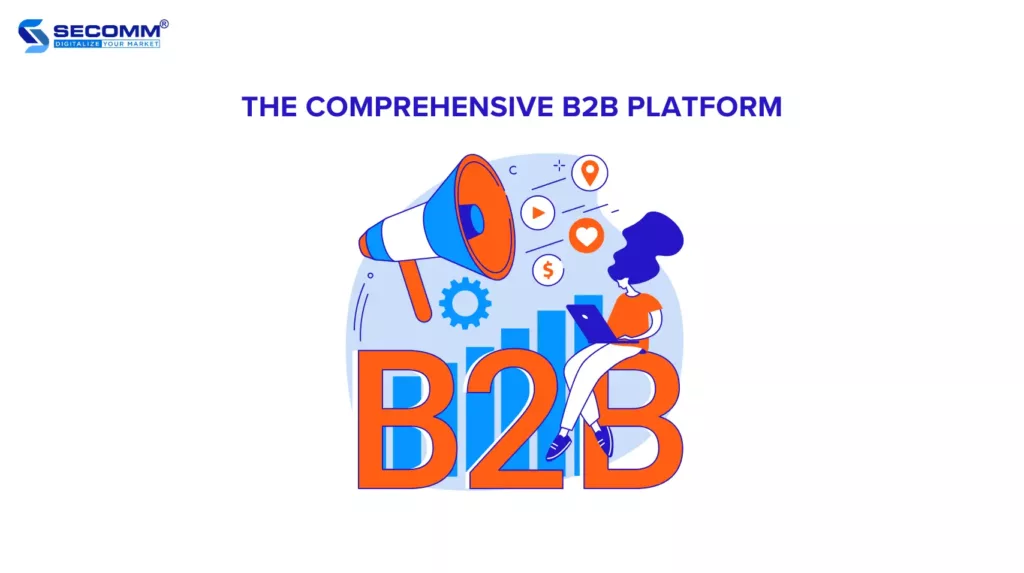
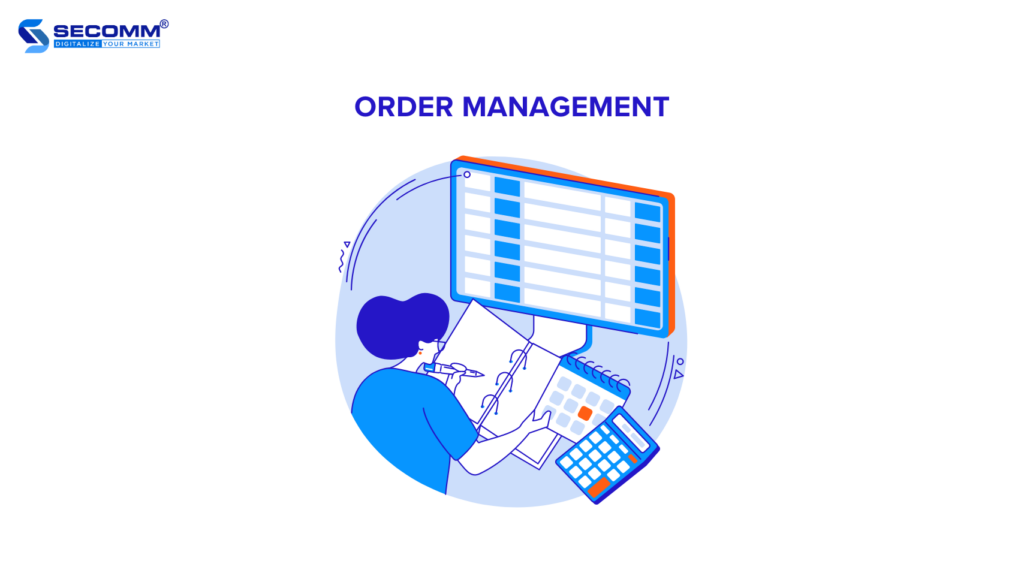
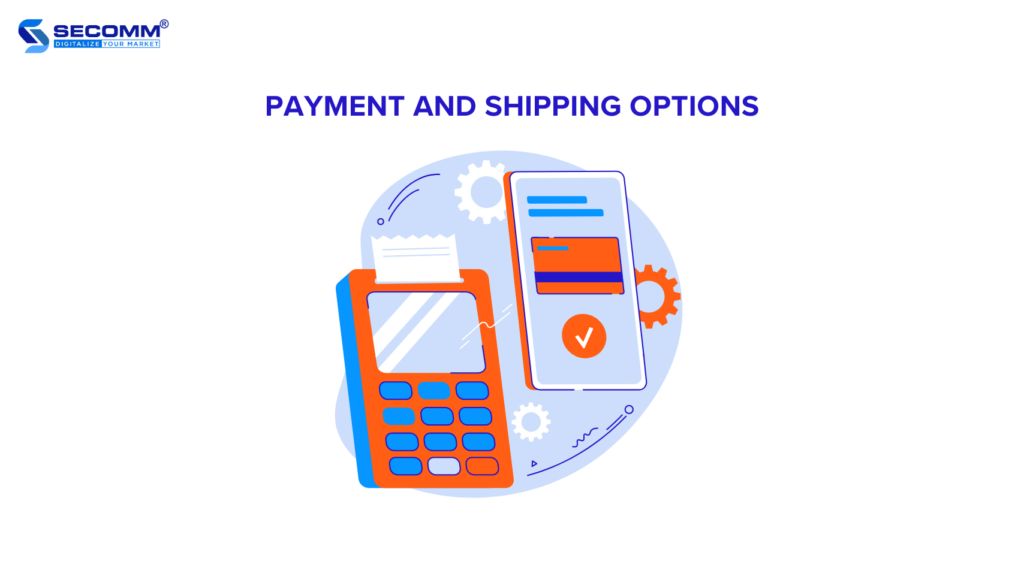
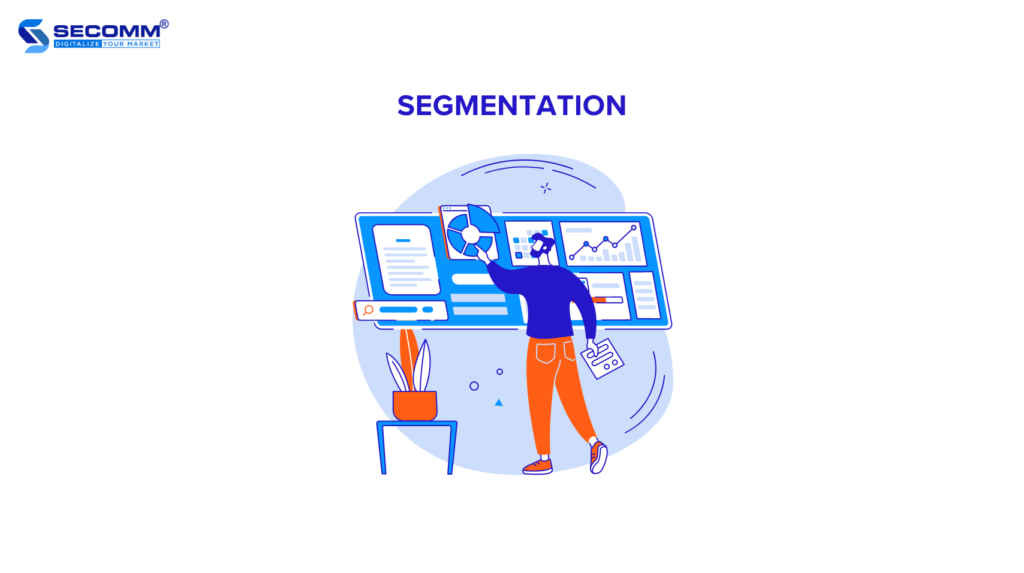
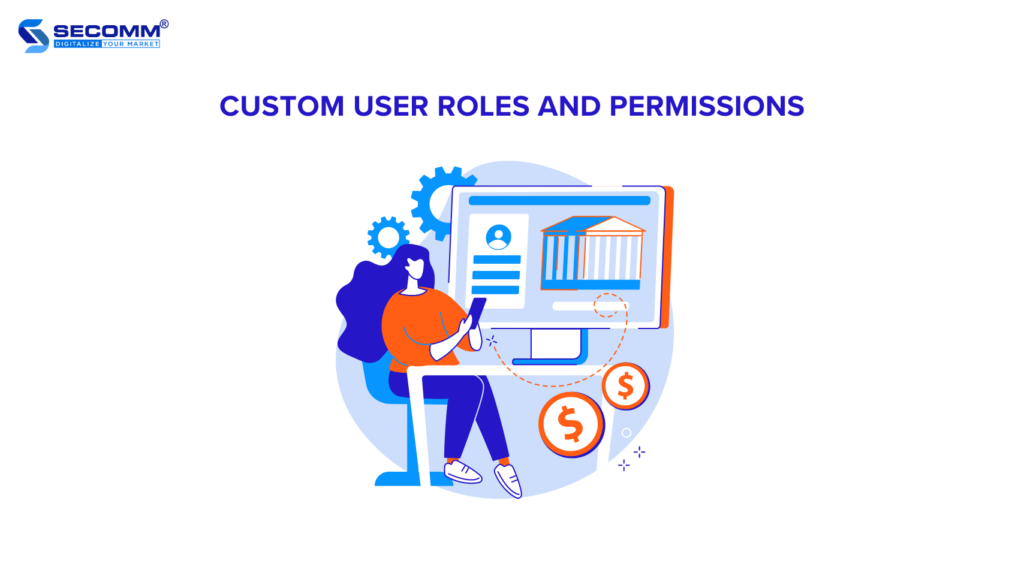
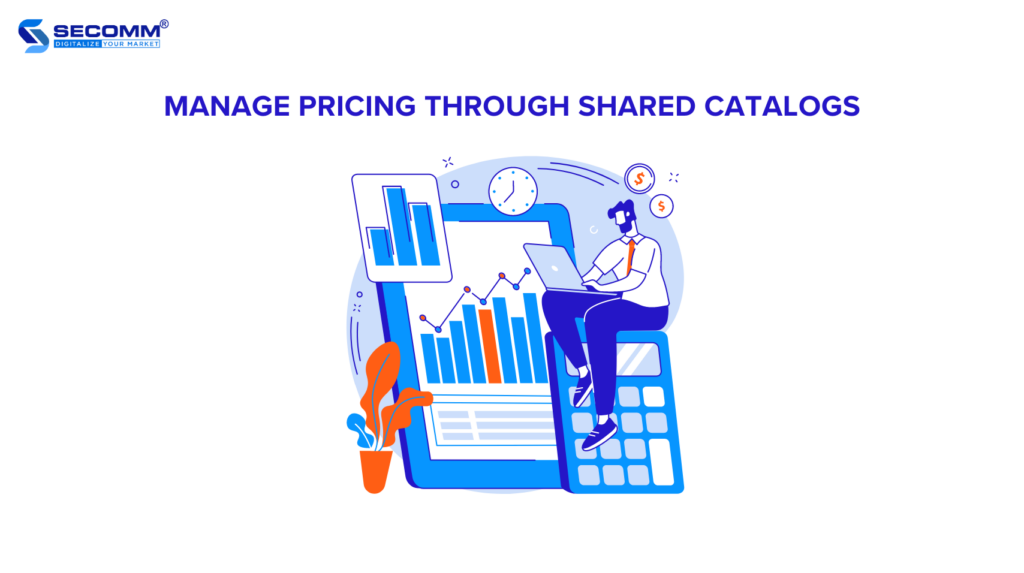
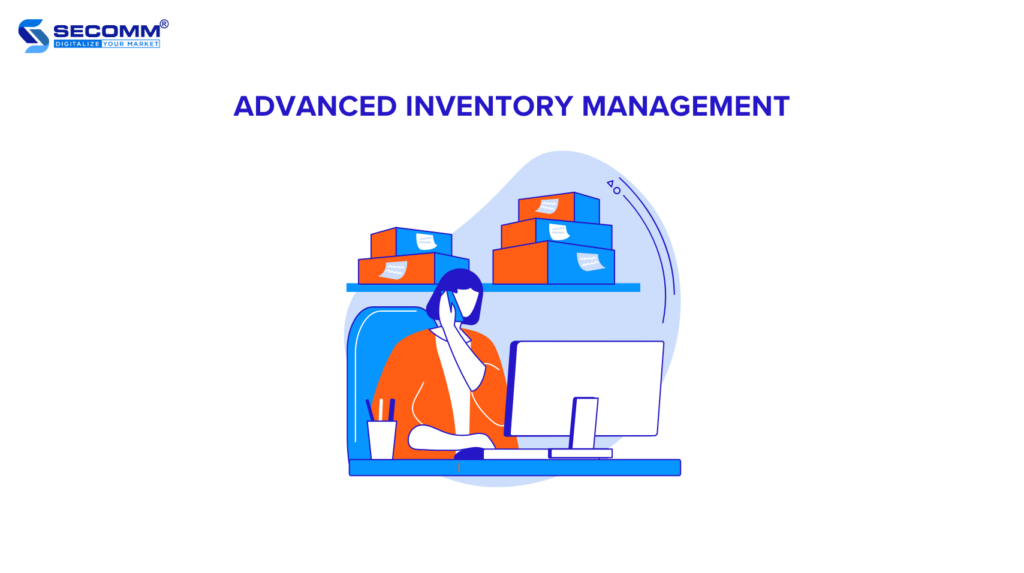
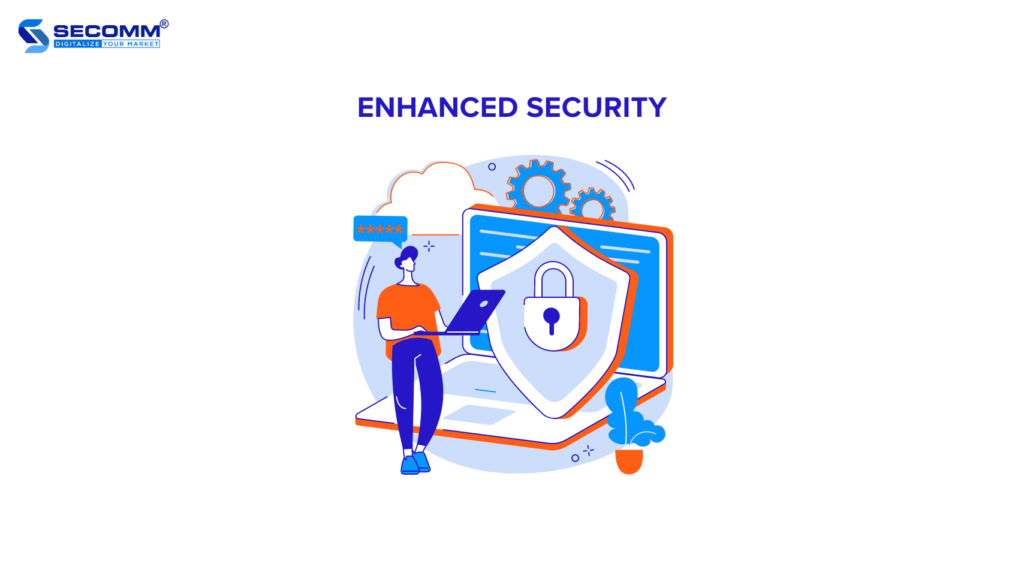
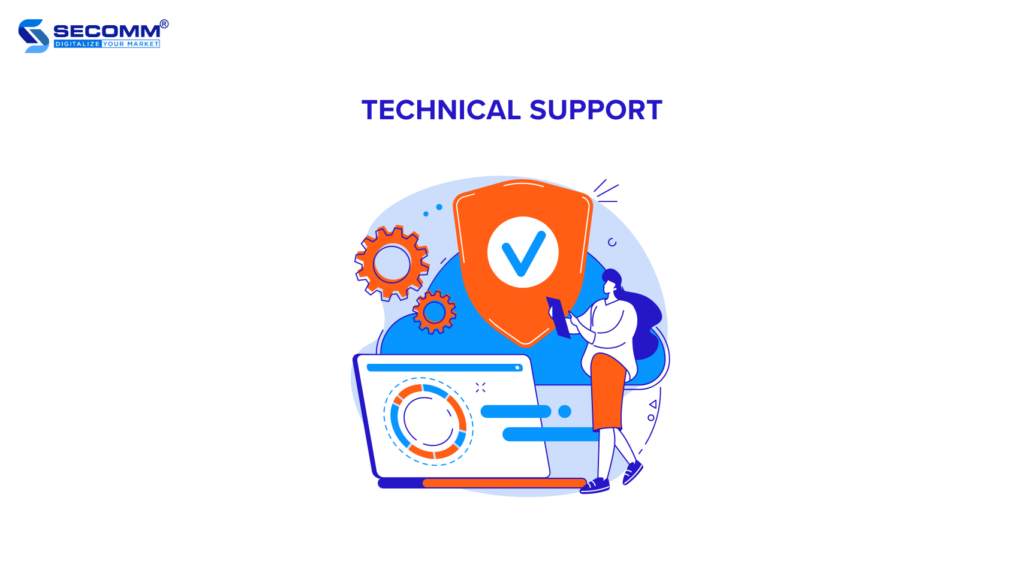

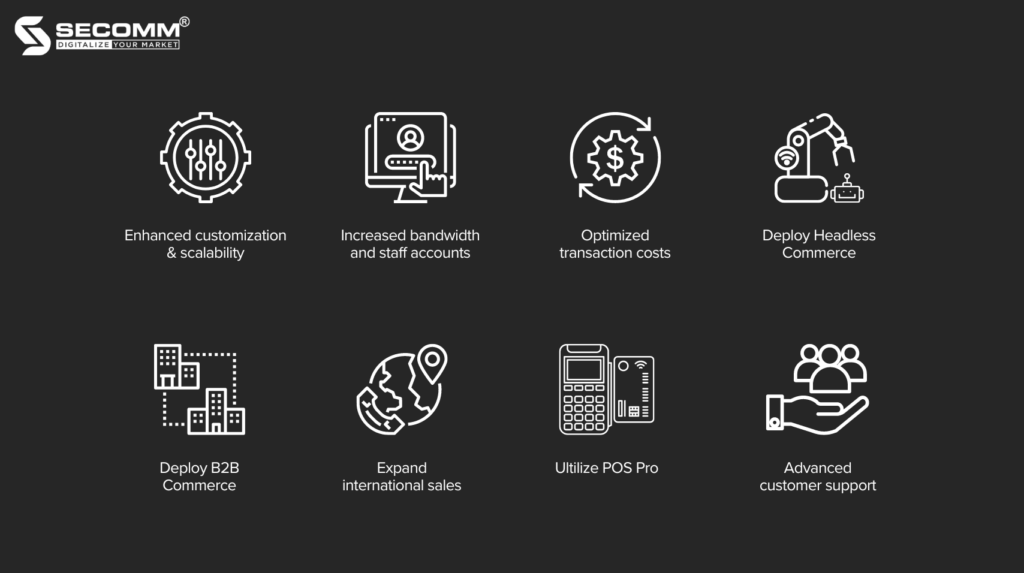
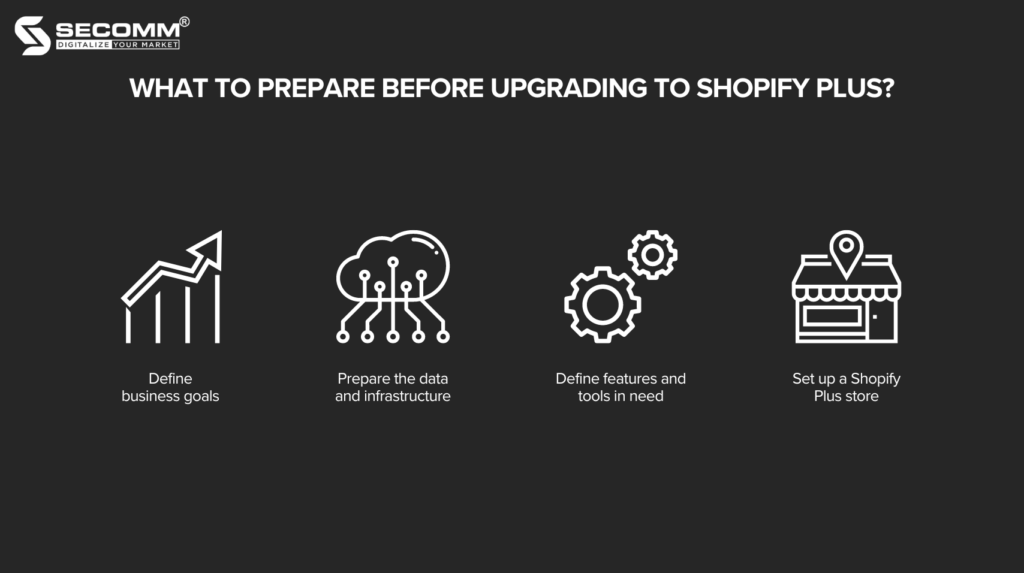
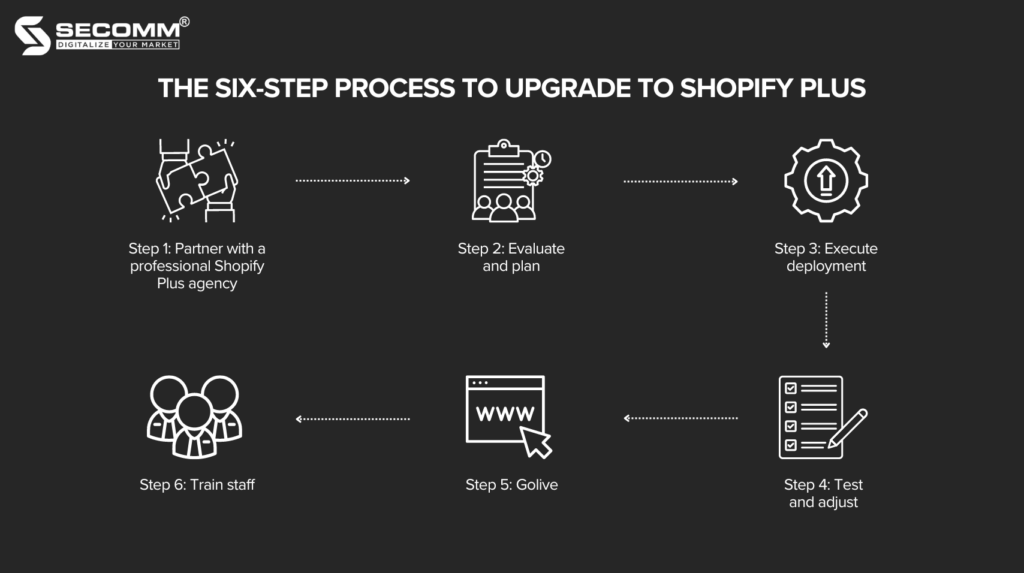









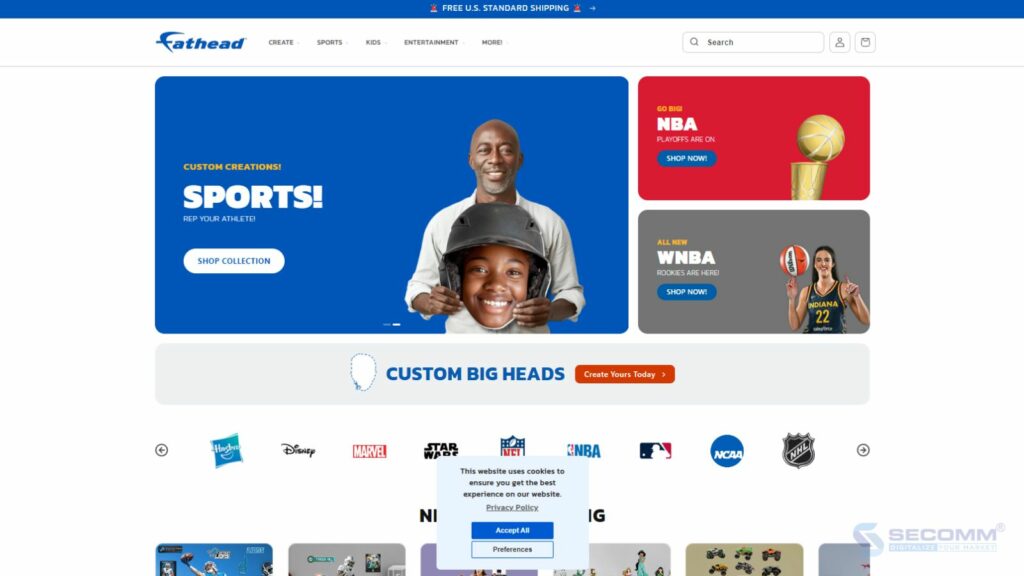
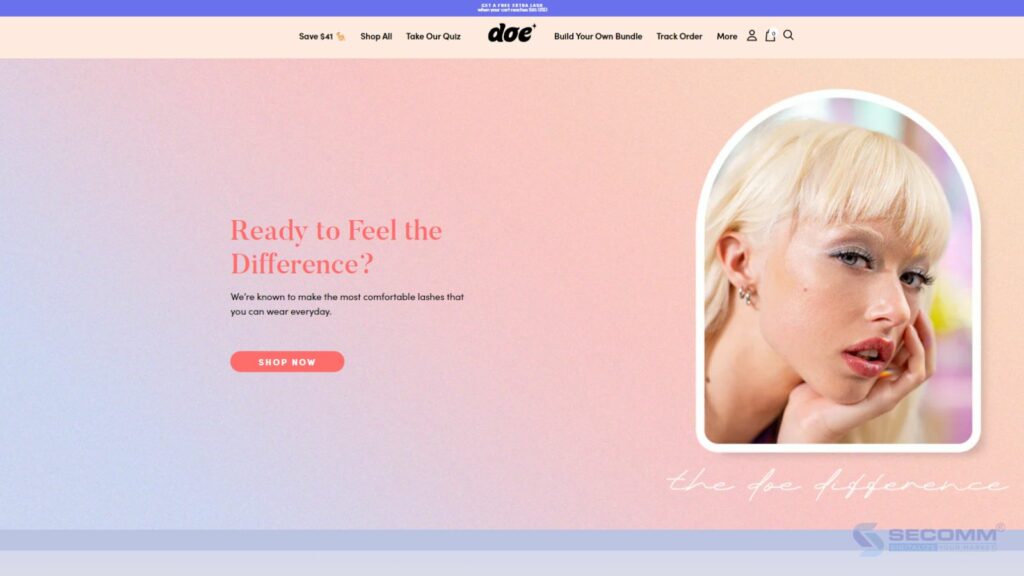


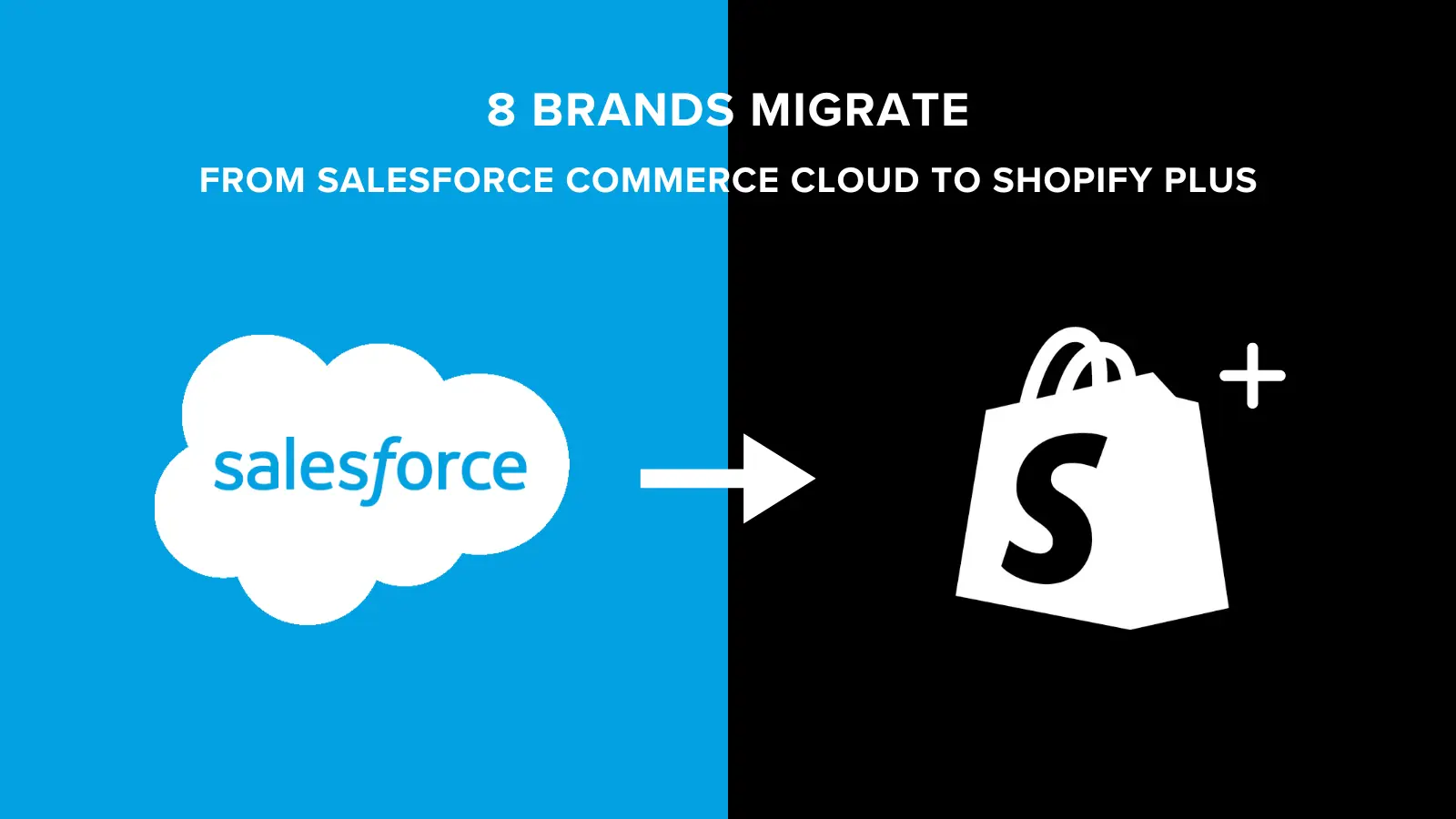









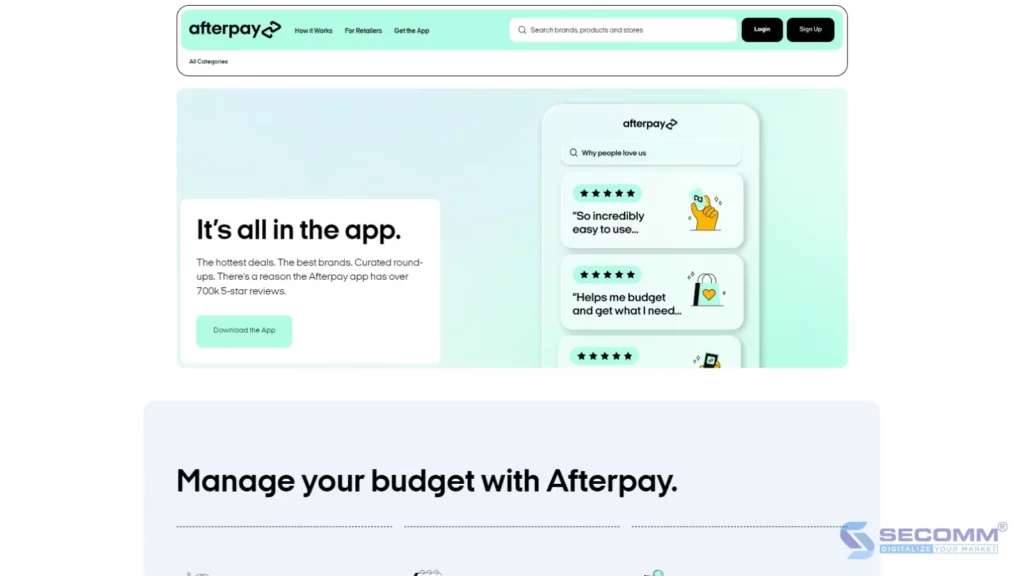
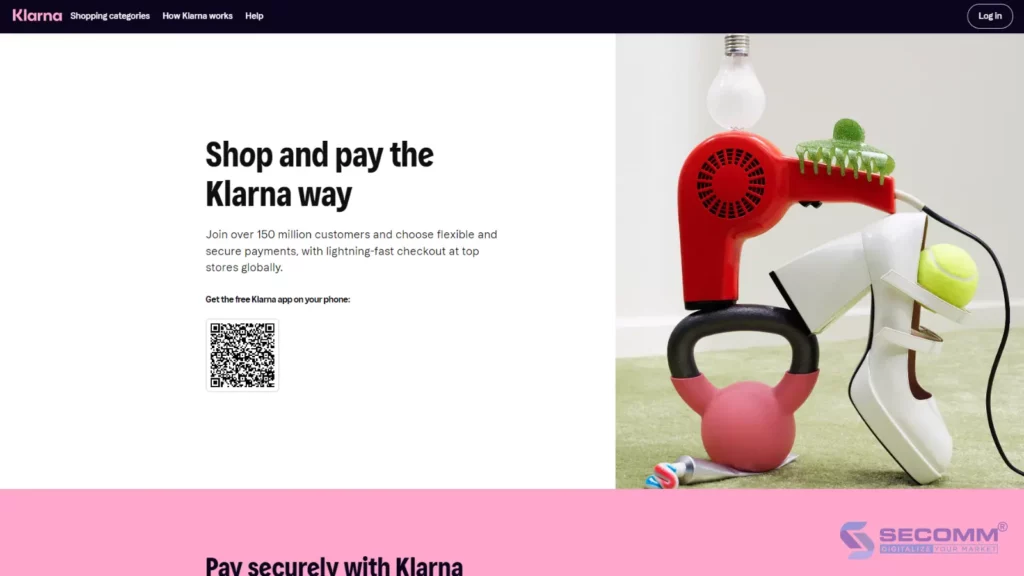
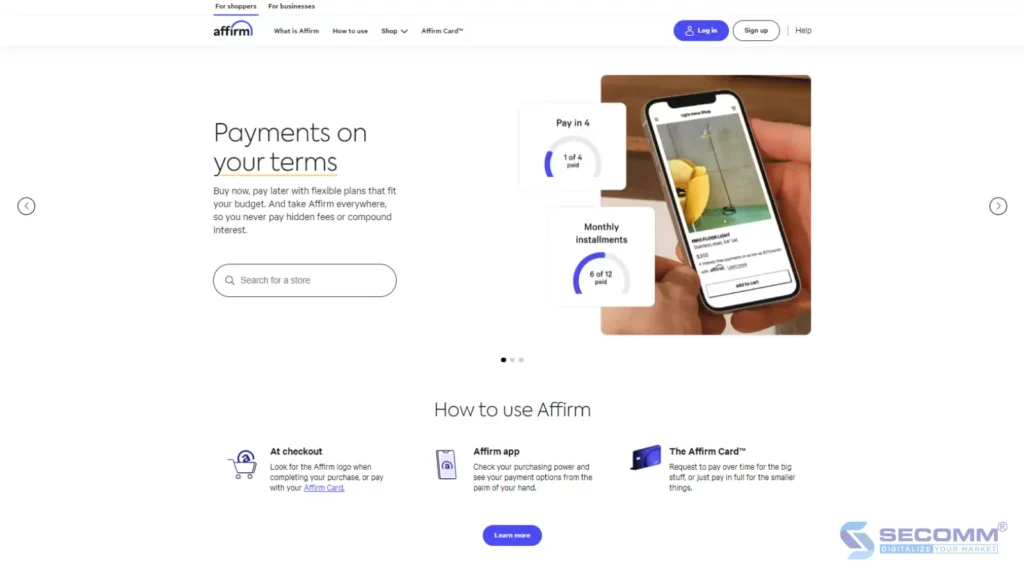
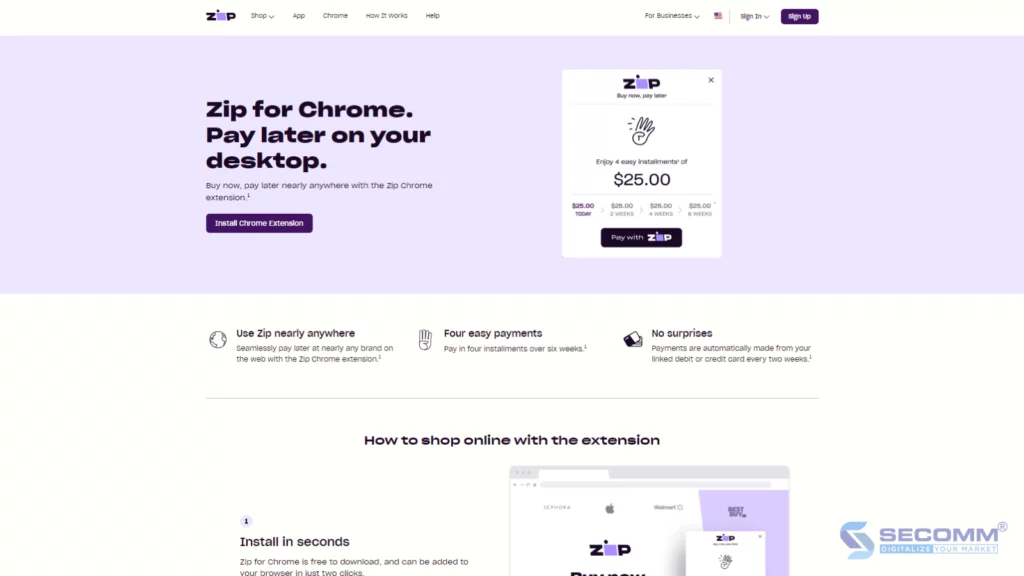
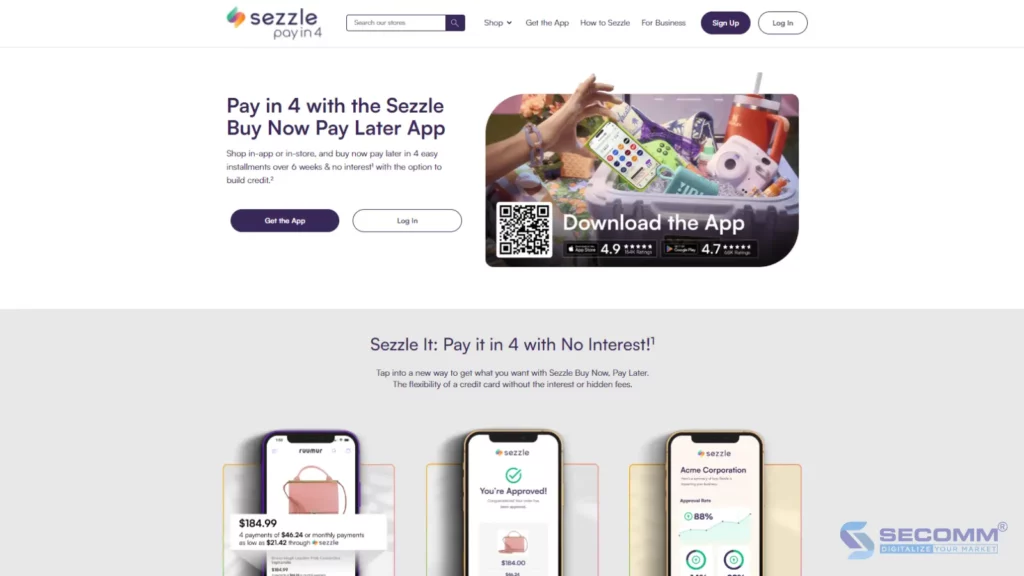
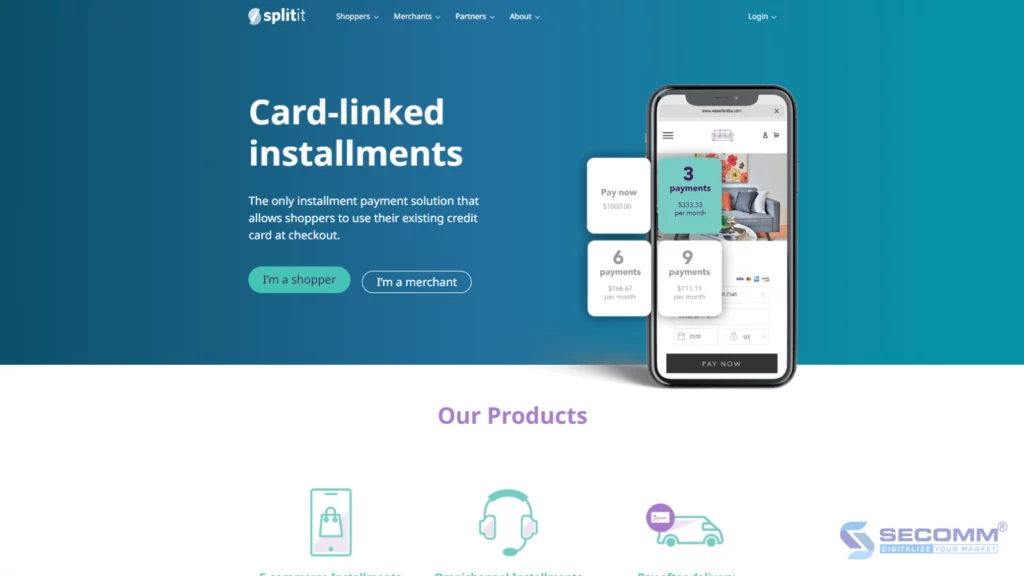
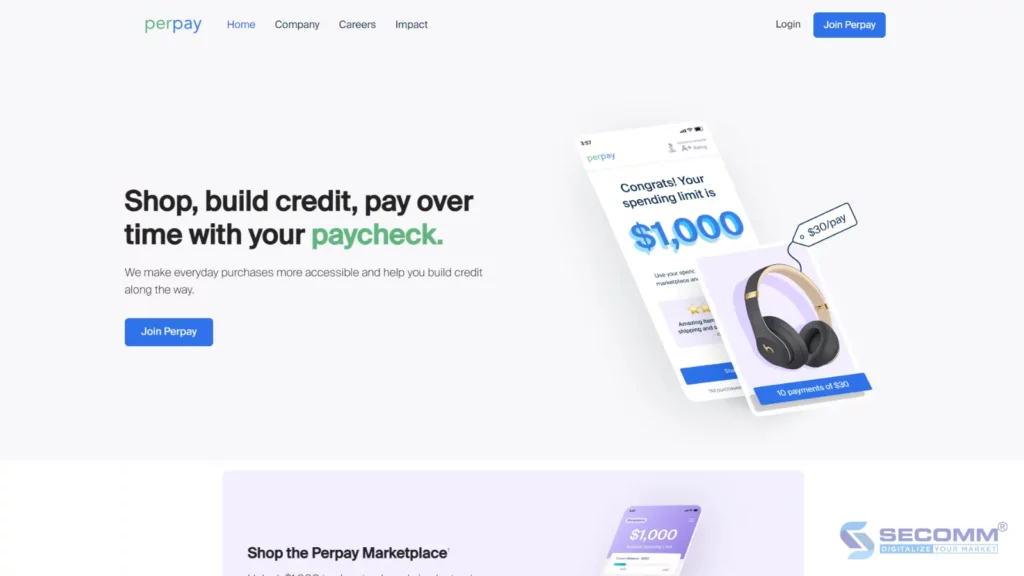
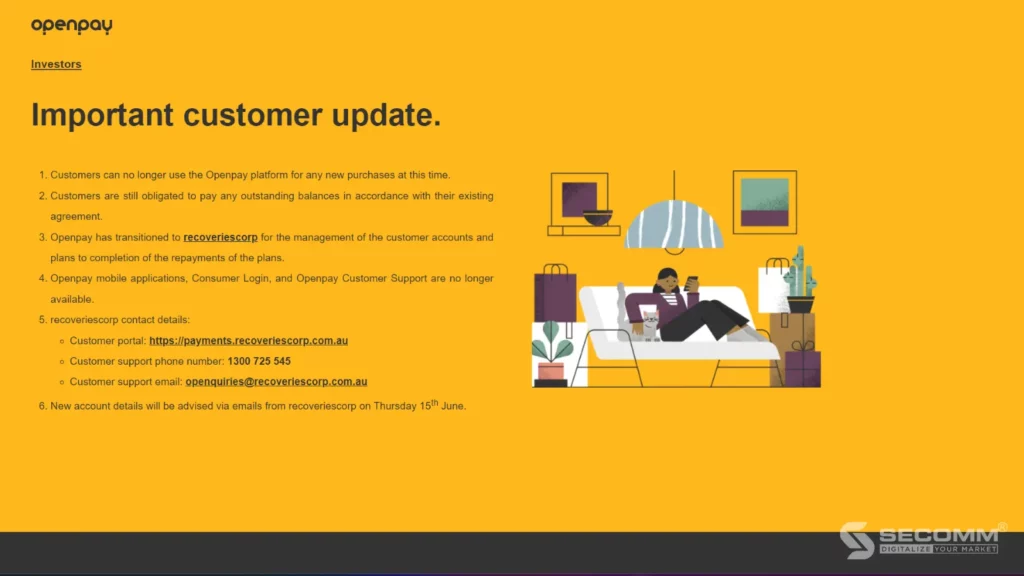
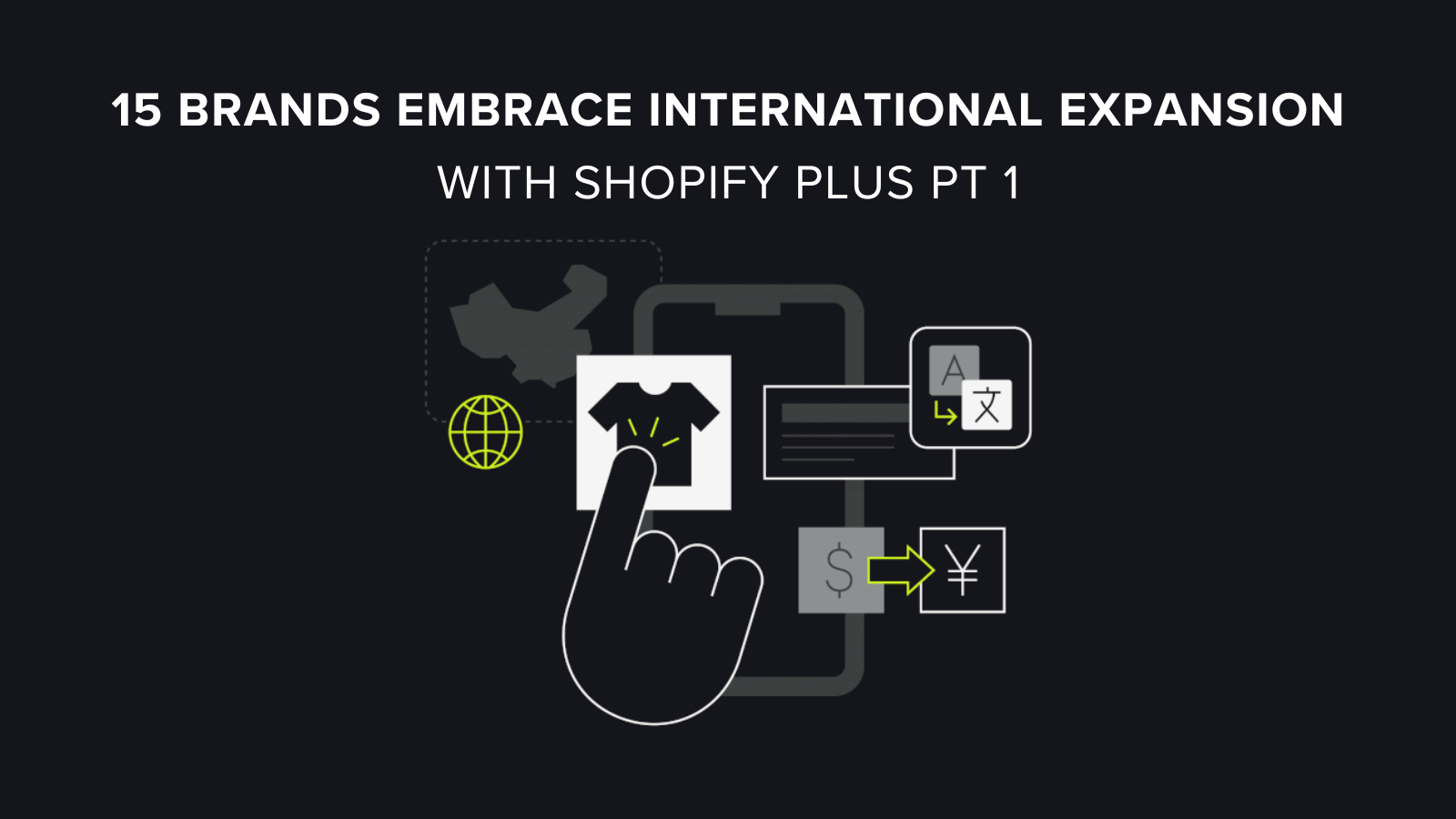

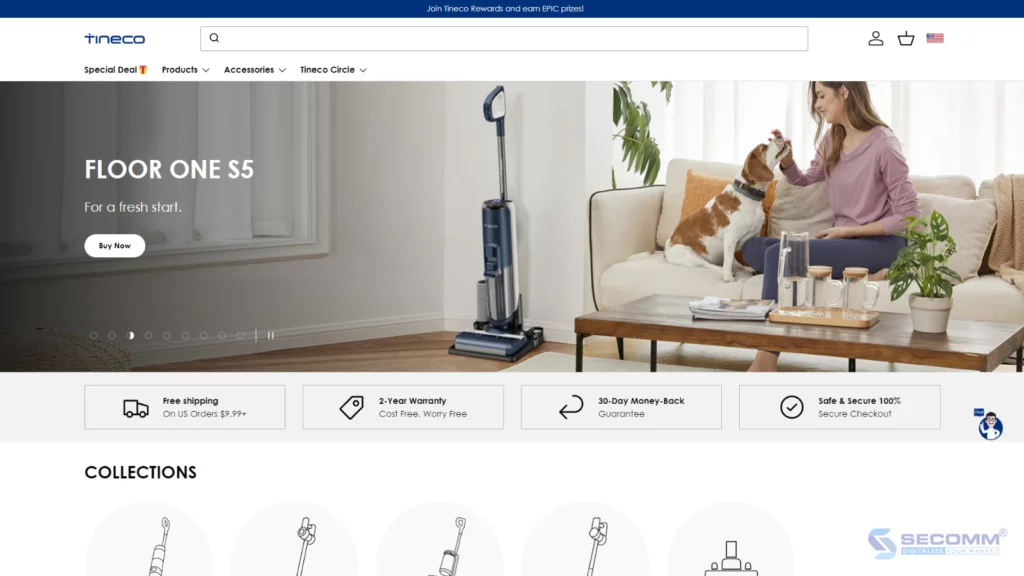




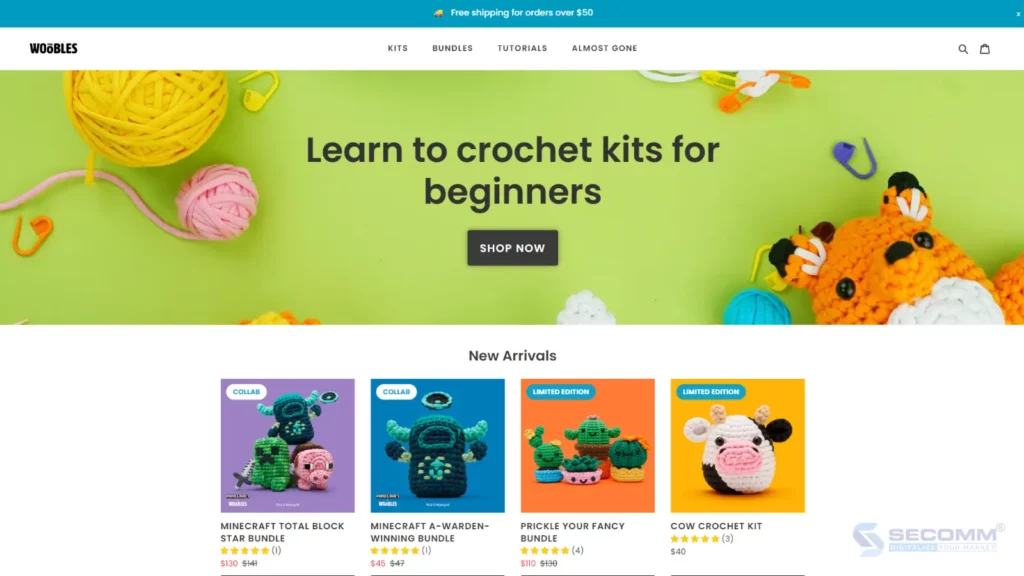




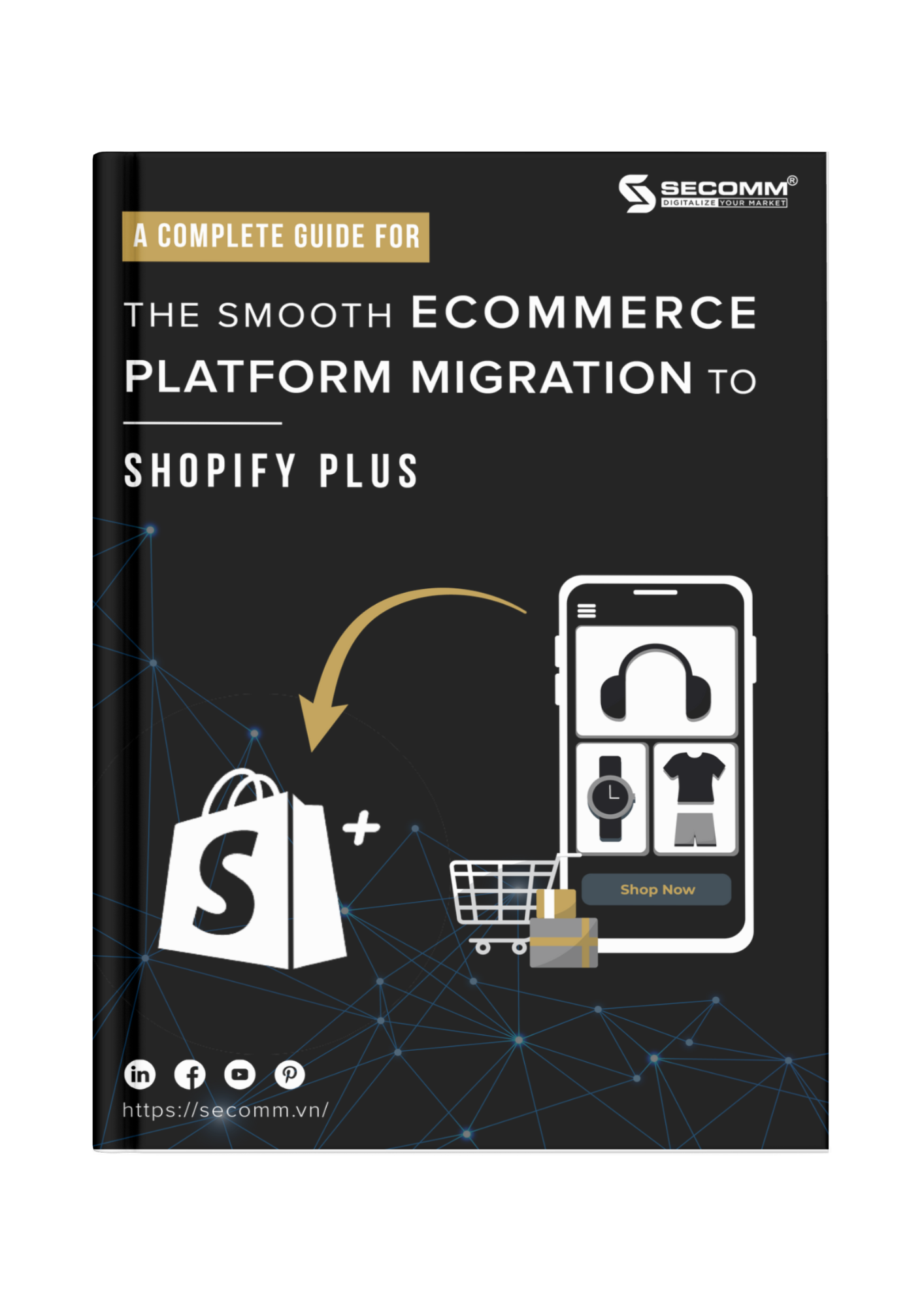



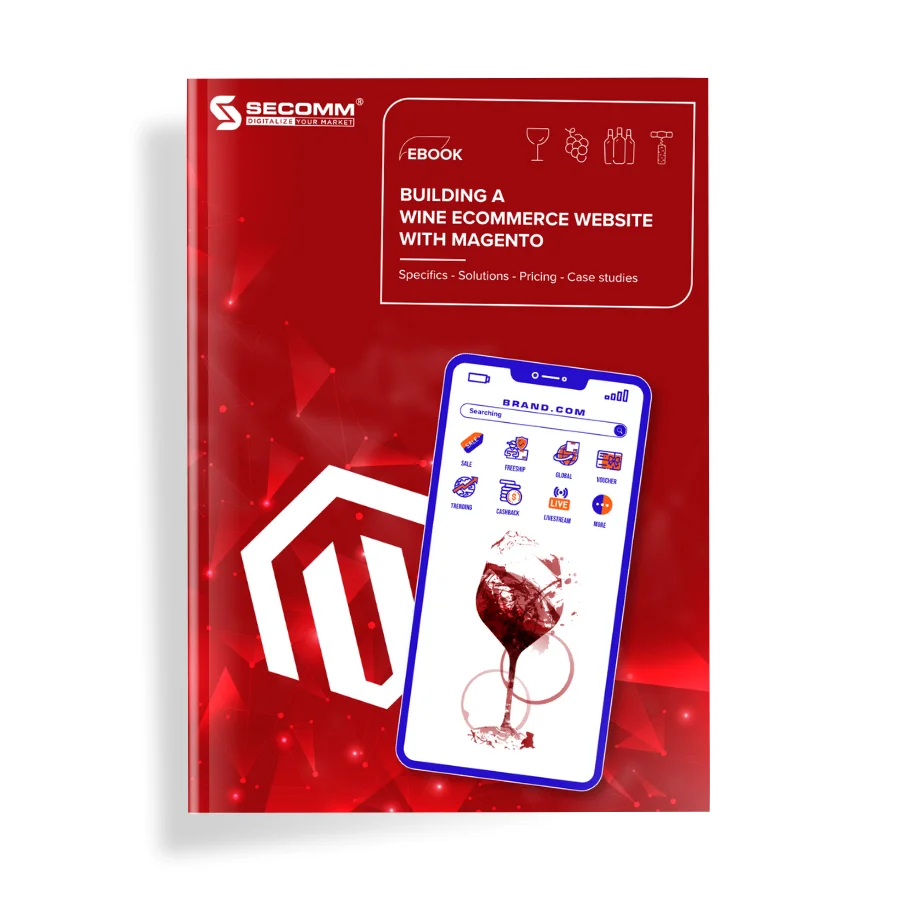
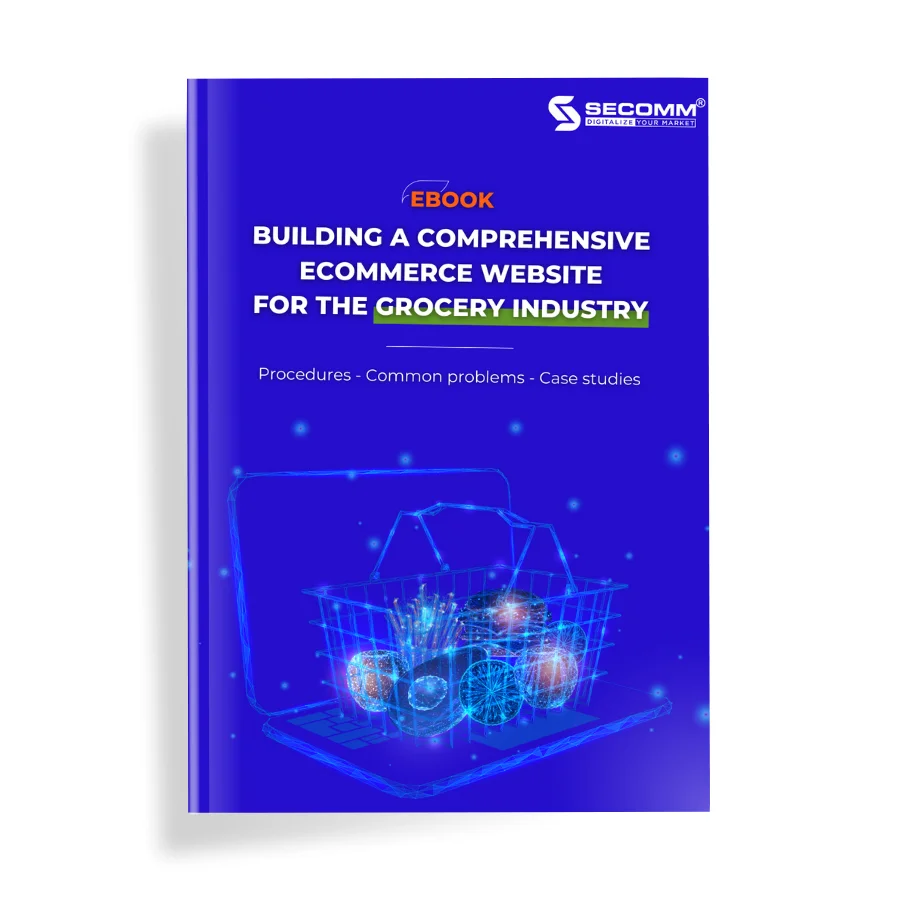
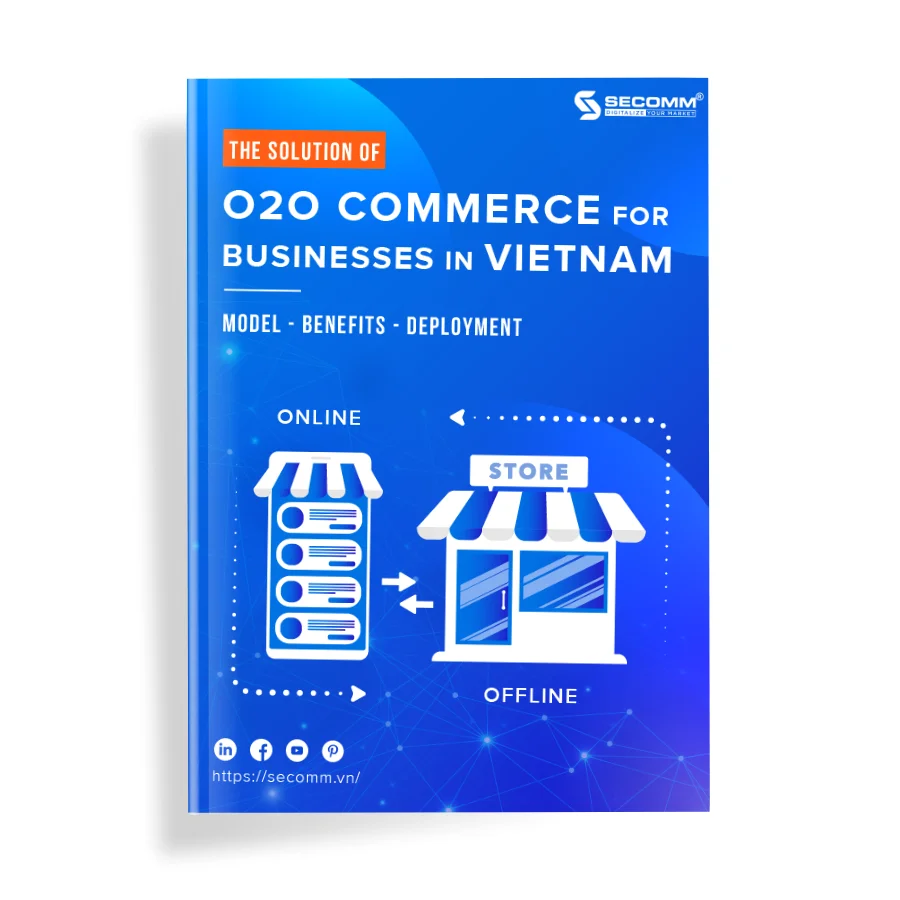
Comment (0)